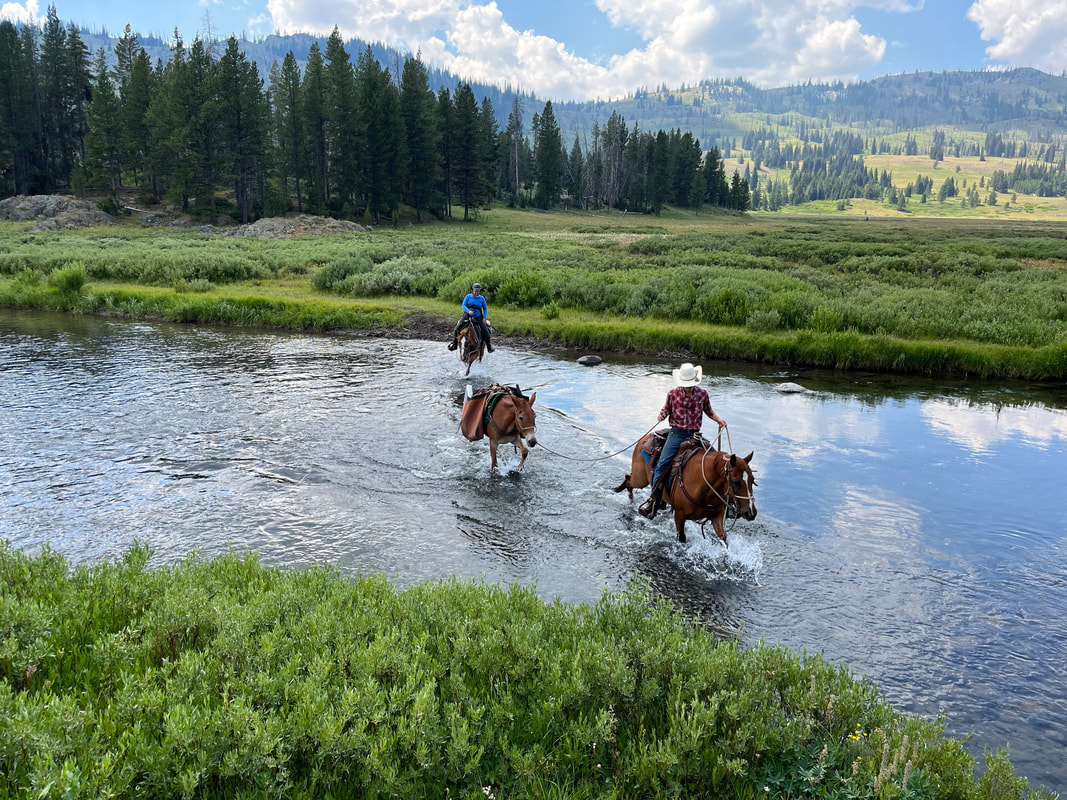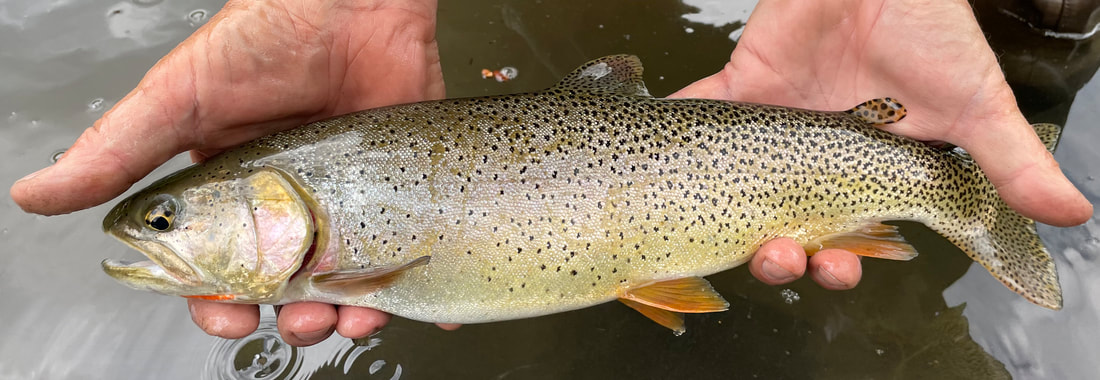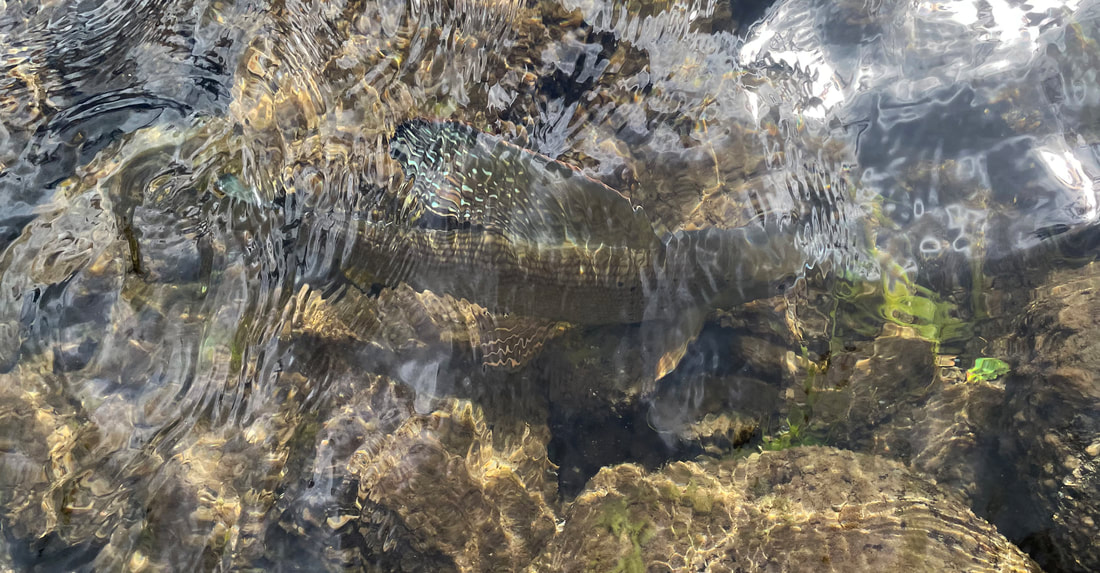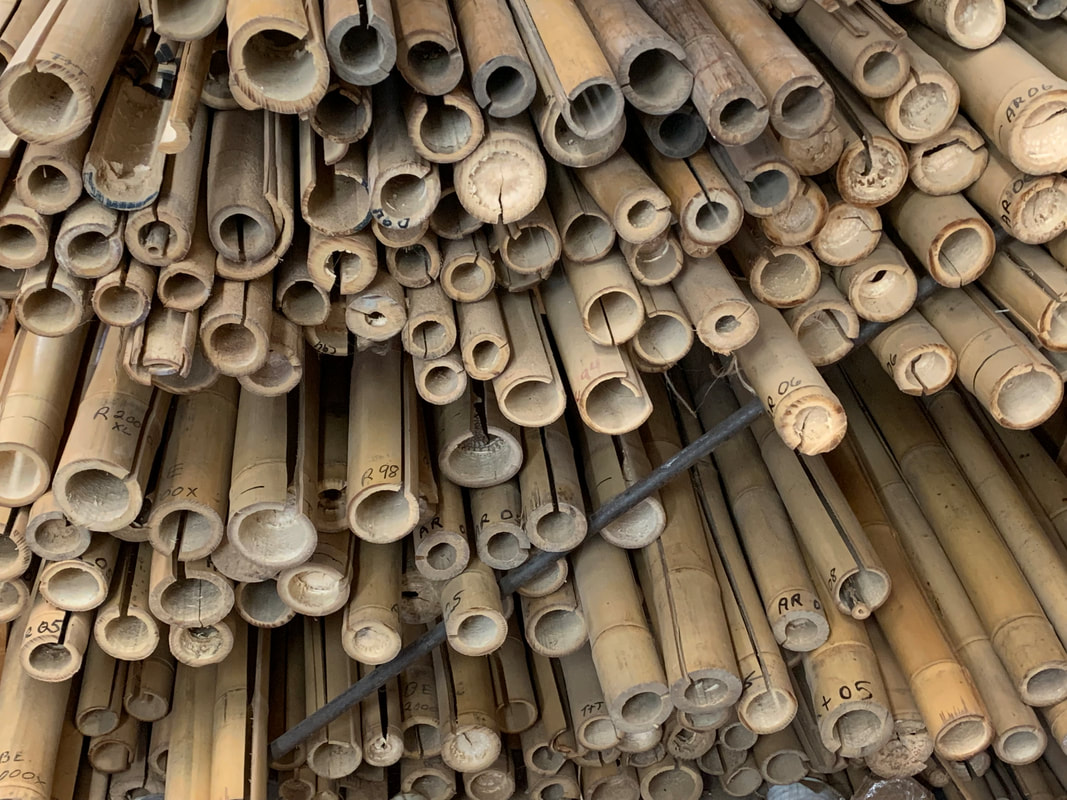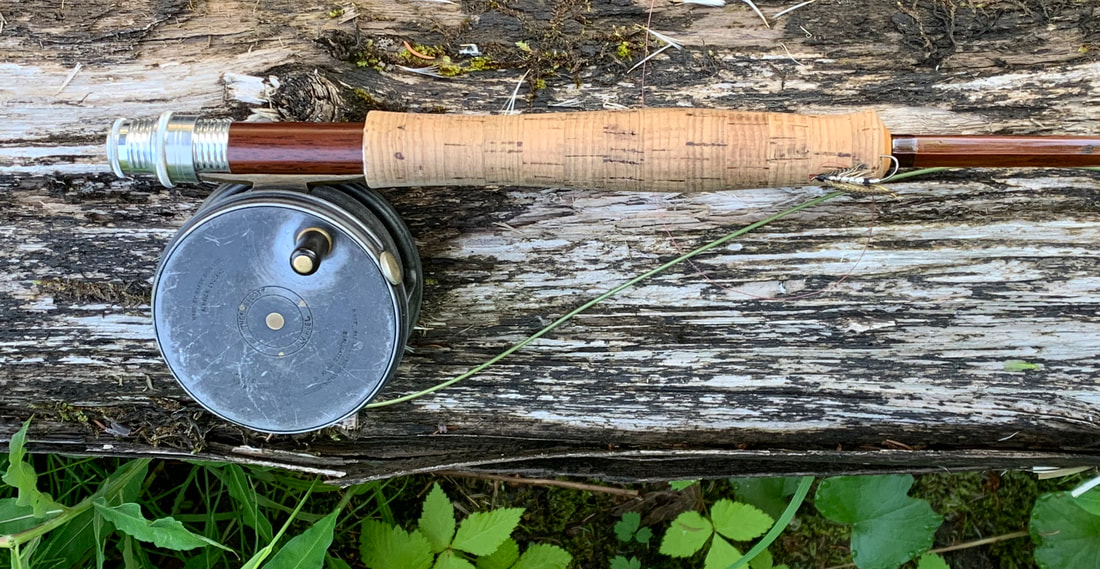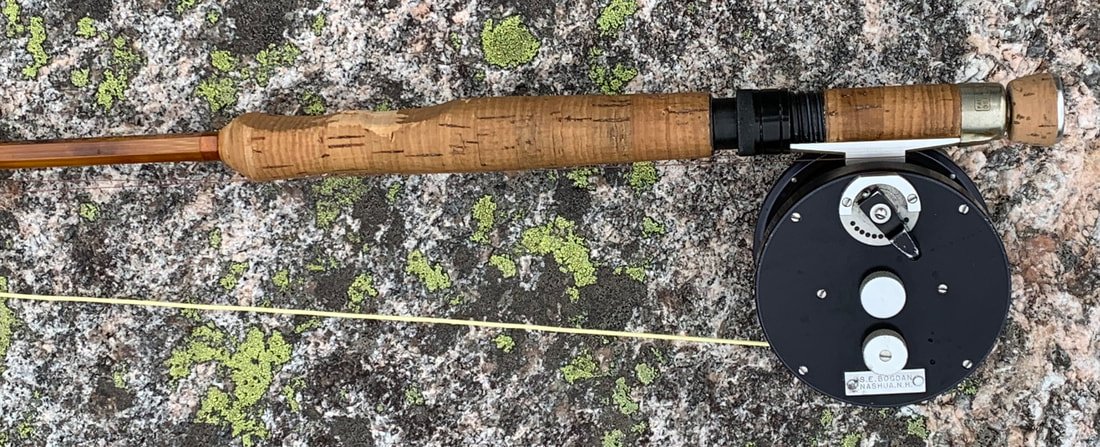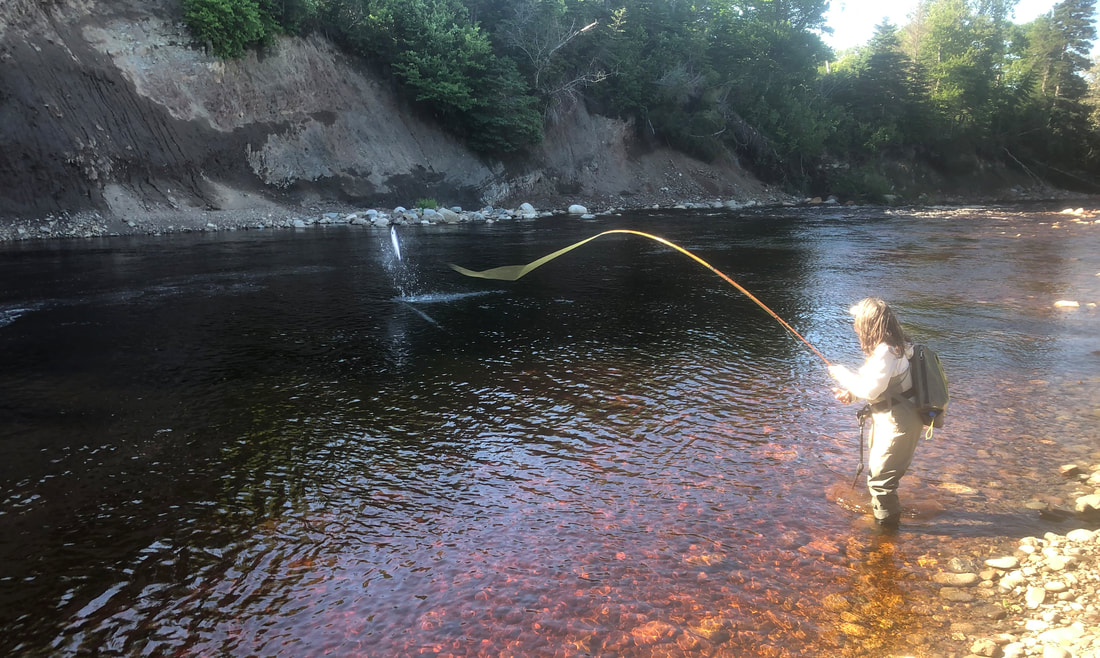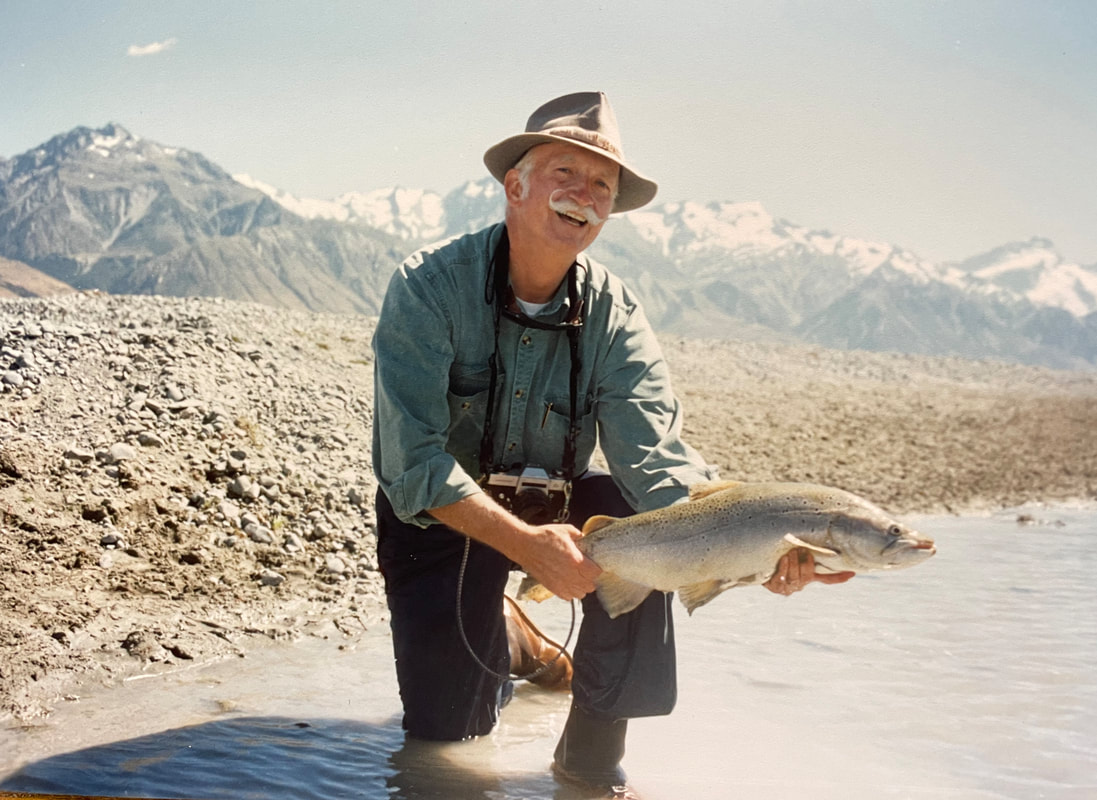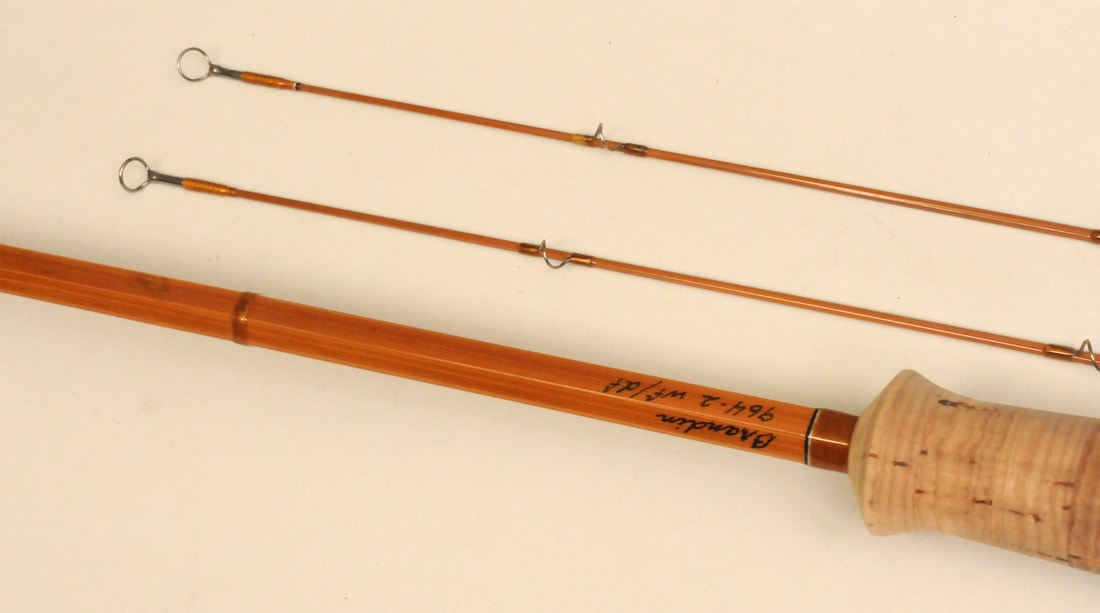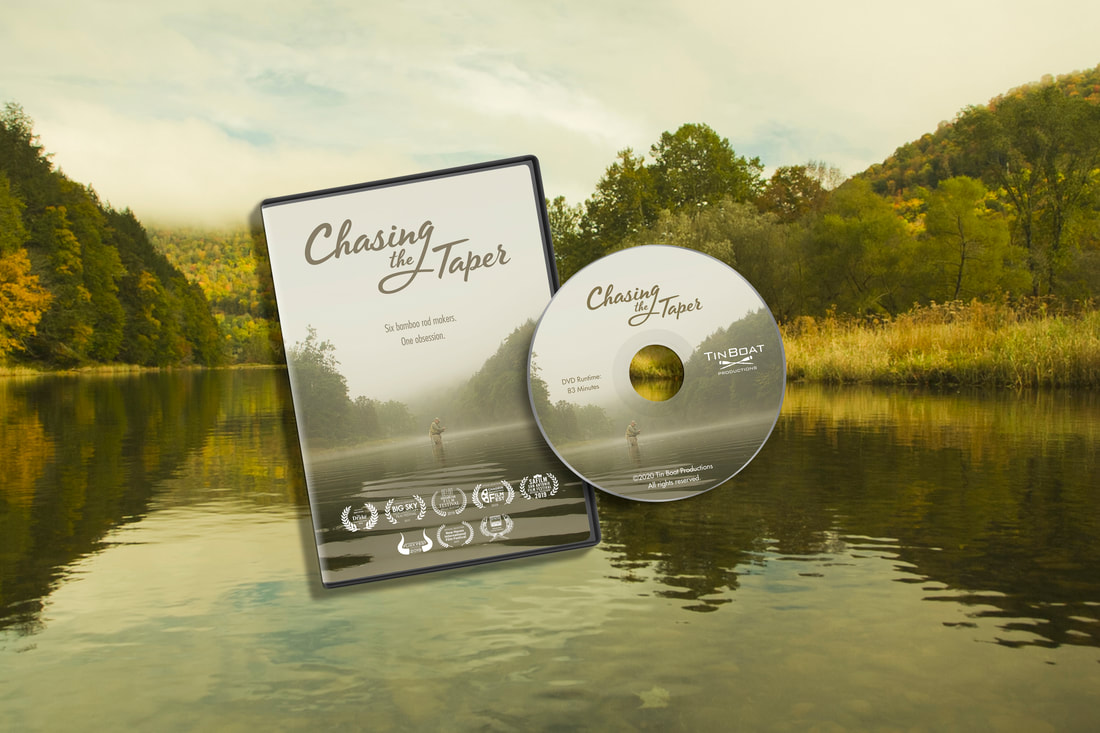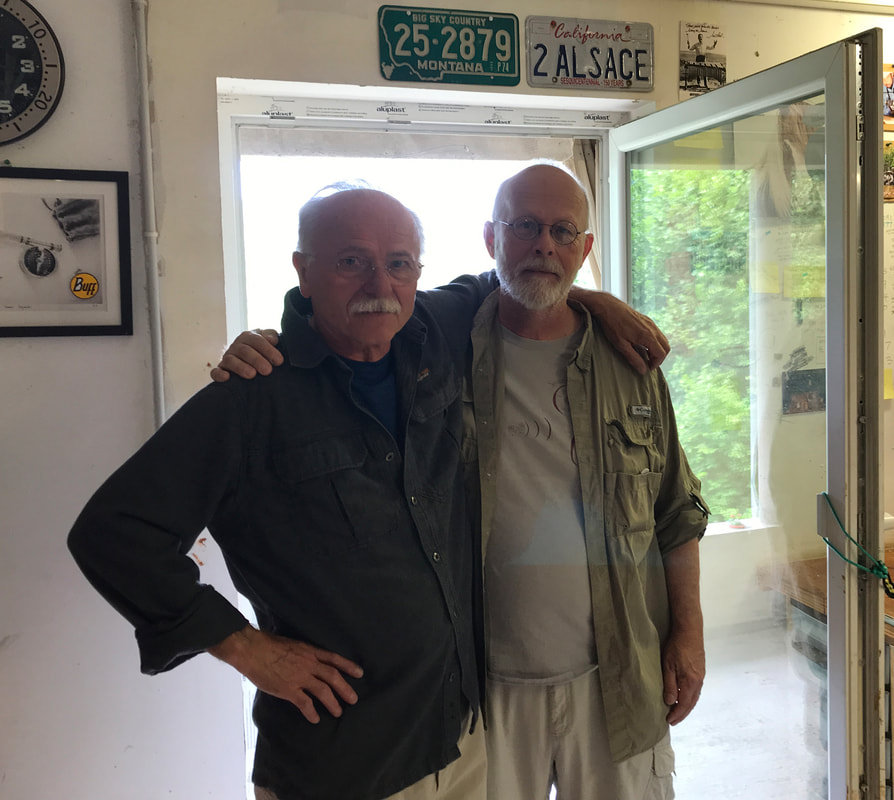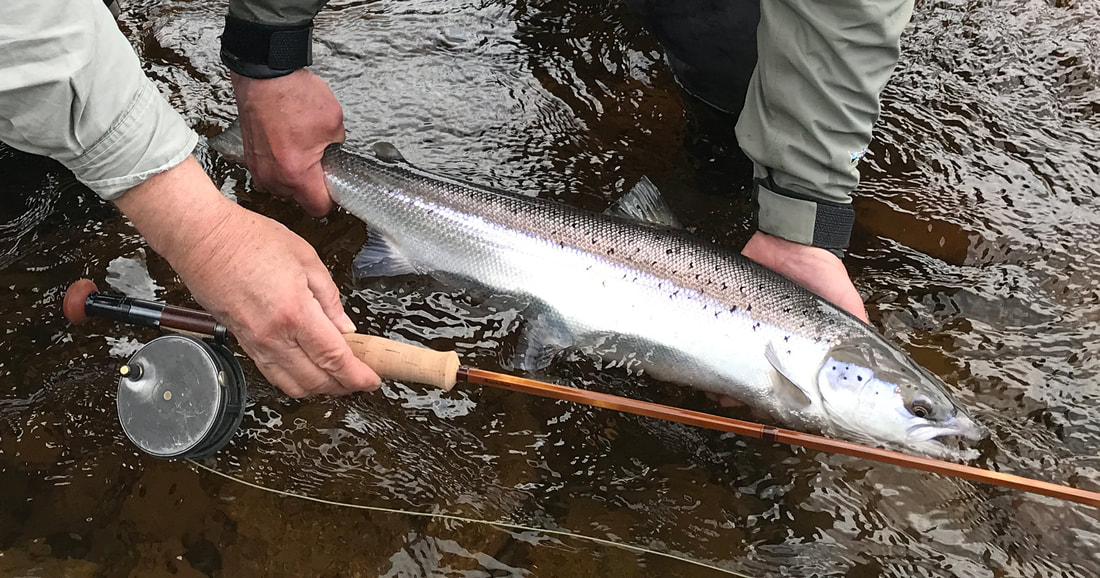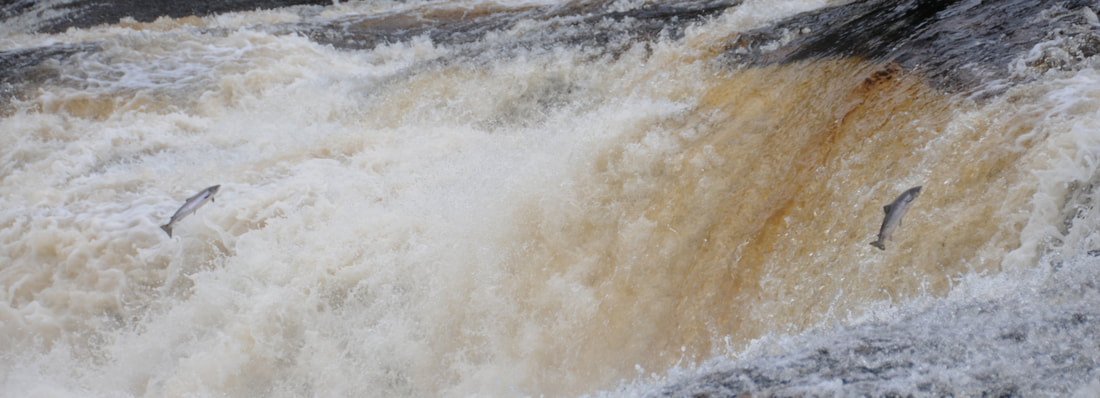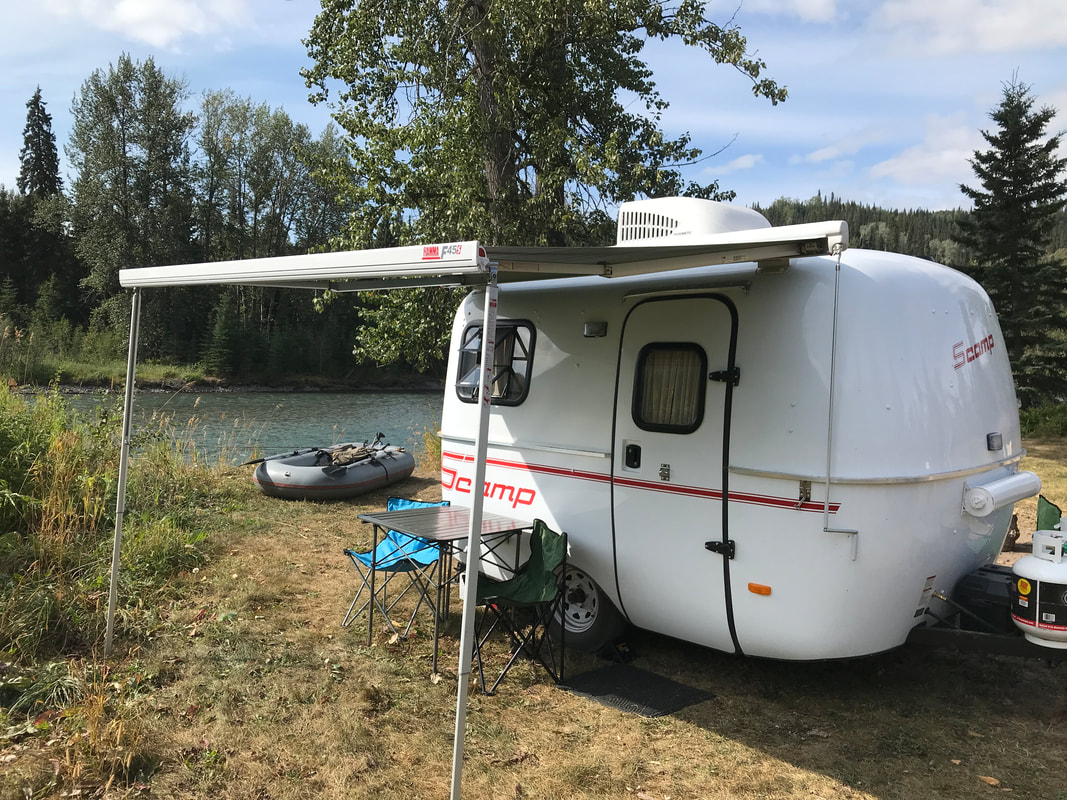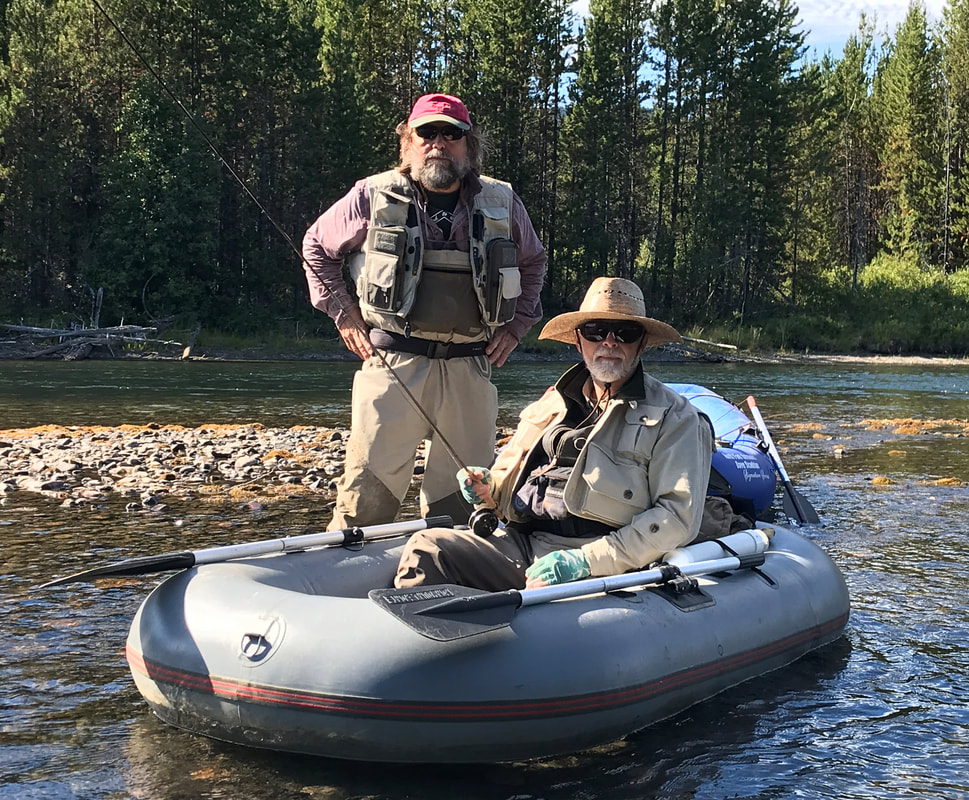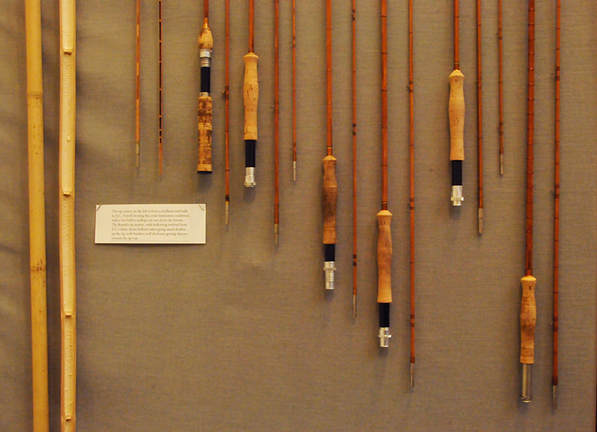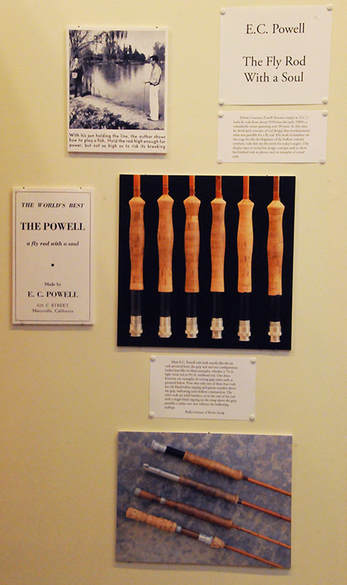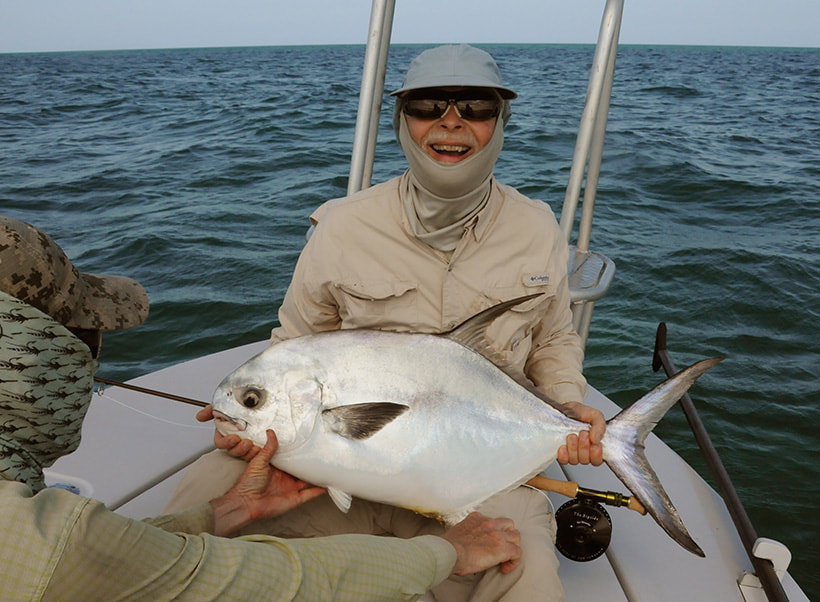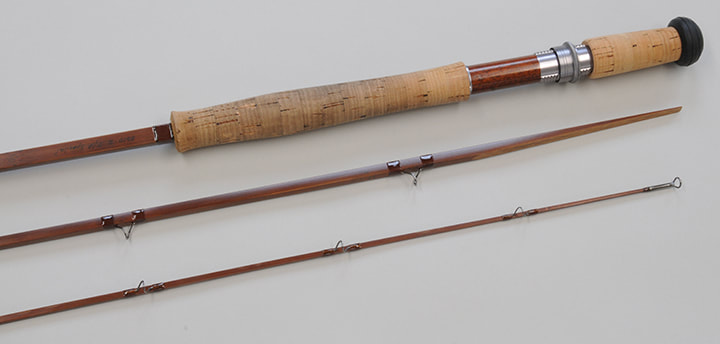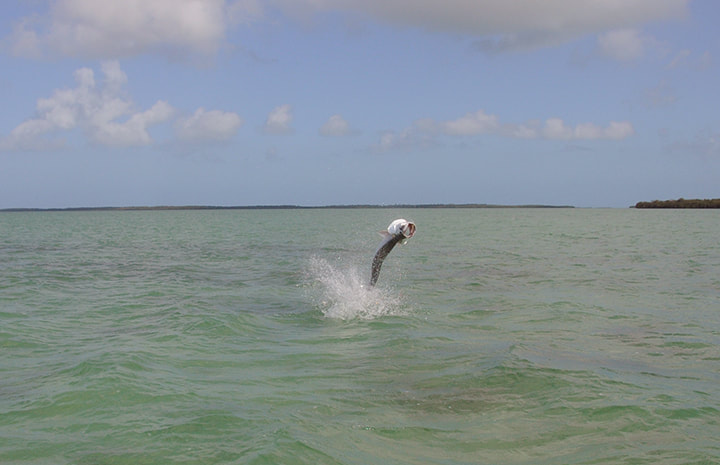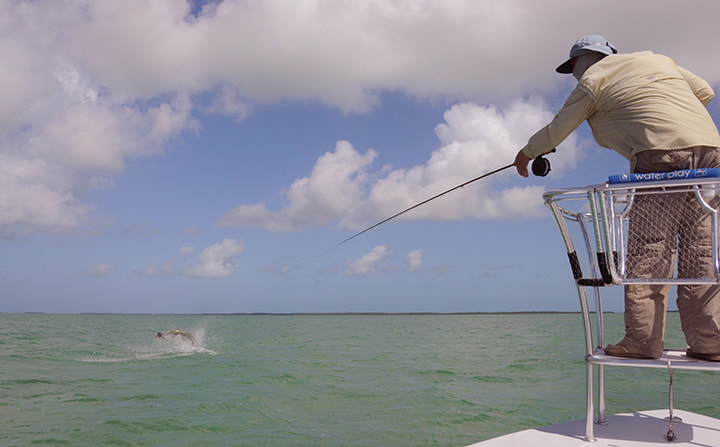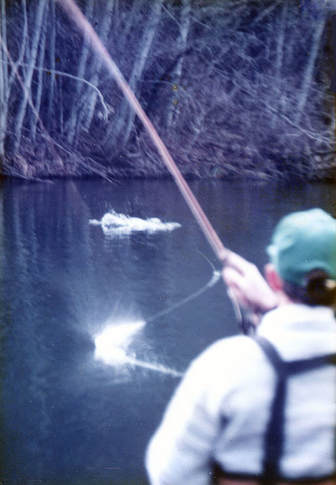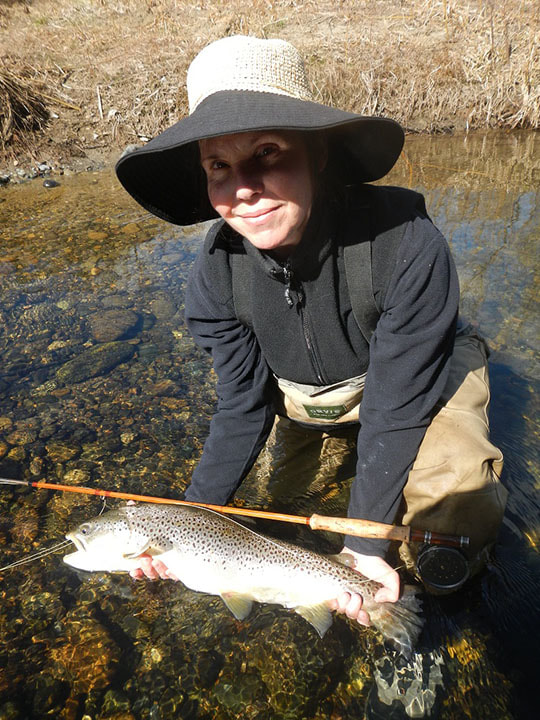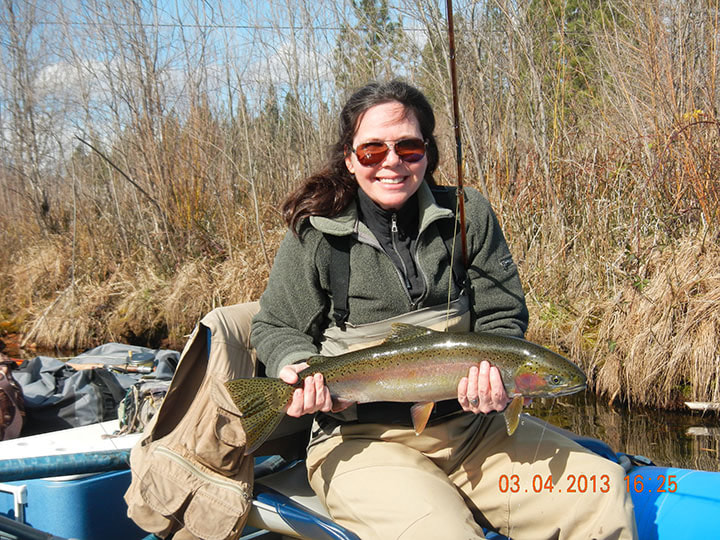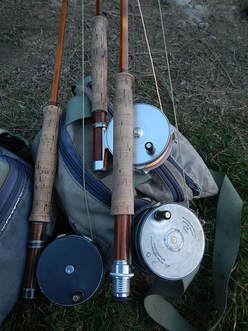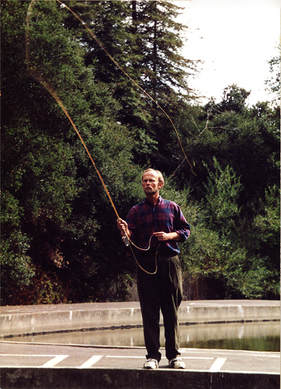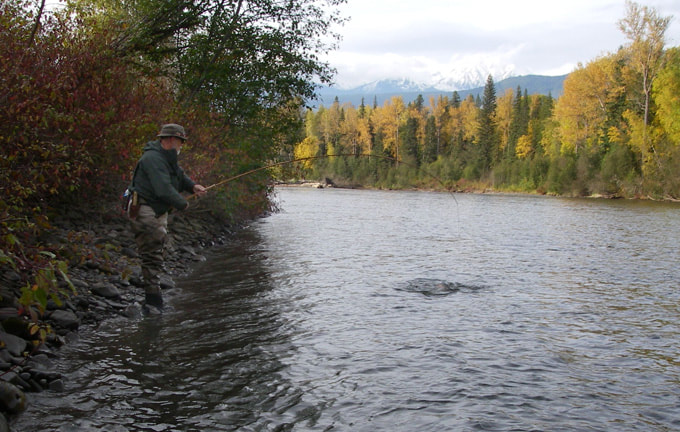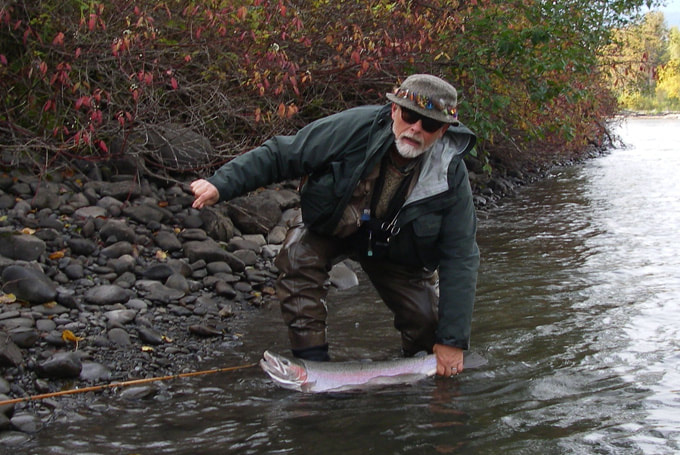|
NEWSLETTER
|
September 2023
Health update; the illness I have is stage 4 prostate cancer, which means it has spread and cannot be 'cured' or entirely eliminated, at least not by current medical practice. It can, however, be slowed down with the treatment I have received which is chemo-therapy and hormone injections. The hope is that we are able to slow the cancer enough so that by the time it grows again there are new treatments available. Having been done with the chemo-therapy now for over two months, I am starting to feel quite well and able to be in the shop working on rods as well as in the darkroom printing & developing photographs. I expect to list two model 762-3df HB quads in the coming months and will be working on new rods going forward as well, so please check this site for current rod production as it becomes available. I have also posted a lot more work on the 'Street Level Photos' page of this site if you care to see this other aspect of my work. I very much appreciate the prayers, well-wishes and caring notes received from many of you; it means a lot and I thank you.
October 2022
You can read about our experience fishing salmon in Newfoundland in the June 2022 newsletter. For next year’s month of salmon fishing in June 2023 I hope to have new rods of my own make to try. Other than the longer parabolic mentioned before, I also have plans for a 10 foot, three piece #7/8 line rod based on a ‘Buddy’ Powell I at one time owned. I would love to have that length for line control and the trick will be to use sophisticated hollowing so the swing weight it not too much for a comfortable day on the water. After writing and publishing my book on E.C. Powell, I find that his design ideas are playing a larger part in my own building.
After our time in Atlantic Canada we were home for about 10 days before leaving on a long trip to the American West and British Columbia starting in mid July. Last year we brought 22 rods with us, but this year pared it down to only about a dozen, mostly rods of my own make, including some new designs for trial. The primary new rods I fished were two 8’3” #5 line semi-hollow quads, one with a dry fly action and the other parabolic. I liked them both and would make only small changes to either, finding that when I wanted to make longer casts I preferred the parabolic, while for much of my fishing the dry fly taper was my choice. This year I never fished a rod shorter than eight feet as we didn’t visit any of our tiny cutthroat waters.
We had a week in Yellowstone Park, camped in our Scamp trailer at Madison Campground that is a good jumping off spot for the Firehole, Gibbon and Yellowstone rivers as well as lakes and other waters. Waters were often still on the high side from the earlier flooding, but we found generally good conditions and fish where they are supposed to be. The highlight was a damsel fly hatch on a small hike-in lake where we took west slope cutthroats from about 16 to over 20 inches on dries and nymphs as a pair of trumpeter swans drifted around us like angels.
After our time in the park we had a weeklong horseback trip into the Teton Wilderness fishing some familiar waters for my favorite trout, the fine-spot Snake River Cutthroat. We expected good hatches of Gray Drakes as in the past, but the stream we fished is meadow water and the Gray Drakes are silt dwelling nymphs; I believe the flooding earlier washed most of these nymphs out of our meadow. We simply didn’t have the numbers of rising fish we have had other years, but still managed a few very nice fish and we always appreciate being so far from crowds.
Jean Gobillot photo
Our next venue for tackle testing was northern British Columbia well up the Cassiar Highway. Bob Clay who lives on the Kispiox River joined us for a few days of rainbow trout and grayling fishing and he was also good enough to give me his old 2hp outboard motor for our canoe. This was the first year we brought the canoe up to those waters and it gave us much more flexibility as it paddles much faster than our usual water masters. With the little outboard ‘kicker’ we could leave camp and be fishing the lake outlet in about 10 minutes. Having learned these waters from many years on them, we finally figured out where some of the larger rainbows are and we got fish up to 18 inches; thick, strong native rainbows making this area our Shangri-la.
Half a day’s drive north we also have a couple of grayling rivers we love so we moved camp north to the shores of Dease Lake and enjoyed these fish for several more days. We met a native couple (First Nations) who told us we needed to take the drive into Telegraph Creek. It was an all day affair and very well worth it for the spectacular scenery and history of the area.
Jean Gobillot photo
Our drive home took us back through Montana where we visited our friends Greg and Mary K Wilson outside Kalispell, Glenn Brackett in Butte and Chris Vance in Bozeman and then we had another week or so camped at Baker’s Hole outside West Yellowstone. The highlight there was fishing the gulpers on Hebgan Lake, wading from shore, a type of fishing we had never tried before. It is fascinating and challenging fishing to large, particular fish that really run when you hook them.
Now home again it is back to work building rods and listing classic tackle for sale. I have taken the time to reorganize my shop, moving a lot of bamboo into our garage attic where I built a new rack for bamboo, reel-seat hardwoods, and aluminum tubes. This gives me a bit more elbow room in my upstairs shop and also provided the opportunity to examine and appreciate my stock of bamboo. I have a great deal of very, very good bamboo that has been acquired from a variety of sources over my 35+ years of building and it is a treat for me to see some great culms that I remember selecting years ago, imagining the rods a certain piece would be good for. Some of the most interesting bamboo I came across was acquired about 25 years ago from Don Calcaterra who would allow Mario Wojnicki and myself to ‘cherry-pick’ from his large stash of bamboo dating back to the 1980’s. I got 8 or 10 culms that were from the old Winston shop in San Francisco, dating back to the 1920’s. These pieces are only 8 feet long as was the norm in those days, and not particularly large diameter, but they have exceptional power fiber. I plan to make a few special rods from this cane, all solid to take advantage of the unique power fiber, and probably all 8 feet or under. One learns a great deal by simply handling large quantities of bamboo; there is variation in thickness of the power fiber layer, great variation in diameter, and differences in number of nodes and spacing of nodes. In the photo below you will notice that almost every piece of cane has noted on it when I got it and from where. I have culms from just a bit over an inch to culms close to 3 inches in diameter and it is fun to imagine the rods that will come out of culms with particular qualities. I have a lot of bamboo to work from; time to get back to it.
June 2022
My 867-3 S/S mounted with my favorite reel, a 3¼ inch wide spool Hardy Perfect and a Daryl Bury Silver Grey featherwing fly.
For years now my wife Jean and I have been lucky enough to fish salmon in Newfoundland’s Bay St. George. It has been a wonderful testing ground for light salmon rod designs. With the Covid restrictions we have been unable to go for the last two years, but are there again this year with the Canadian border open again. A guide is required to fish salmon in Newfoundland and we have been blessed to fish with Daryl Burry who is not only the best guide I have experienced on the island, but a very fine fly tier as well. His sparse salmon flies have subtle qualities of color and proportion that make them very effective and a joy to fish. About 90% of the time we are fishing with a ‘hitch’ causing the fly to wake in the surface; this is very attractive to the fish and allows us to see any movement of a fish to the fly as well as to monitor fly speed and direction.
A nice Codroy salmon landed by my wife Jean using our standard 897-2 S/S rod and a re-issue Hardy Taupo reel.
Conditions this year have been mixed on the spate rivers we fish most often, but we have had fish more days than not. I often bring a number of rods of varying design as a way of fine-tuning my own designs and perhaps as inspiration for new ideas in terms of rod action and length. Besides fishing my established standard rods, this year I have also fished a Paul Young 8’3” parabolic from 1953 that carries my favorite line weight, a WF7, and an 8’3” Mike Montagne I’ve owned for many years but have now fished for the first time. The challenges of this fishing also makes me interested in building a rod based on a Buddy Powell 10 footer I recently sold. My standard rods are 8’6” and 8’9” and I would be interested to see how the extra foot plus of length would gain more line and fly control.
I have been especially pleased to fish the Paul Young and Montagne rods as their actions are quite different from my own standard designs. The Paul Young at 8ft. 3 in. is a strong parabolic and did a fine job delivering the fly and playing fish, though is just a touch short for this fishing. I have a taper record for a Para 16 at 8½ ft. and if I can find time will work on a semi-hollow rod inspired by that taper and my experience with the 8ft. 3 in.
I have been especially pleased to fish the Paul Young and Montagne rods as their actions are quite different from my own standard designs. The Paul Young at 8ft. 3 in. is a strong parabolic and did a fine job delivering the fly and playing fish, though is just a touch short for this fishing. I have a taper record for a Para 16 at 8½ ft. and if I can find time will work on a semi-hollow rod inspired by that taper and my experience with the 8ft. 3 in.
The Paul Young 8'3" made for Don McClouth in 1953 mounted with a Bogdan 00 single action reel in all black.
The Mike Montagne is a radical departure from any other rods I am familiar with. It is rectangular in cross section, getting more radically so as the tip is approached, hence will only bend in one plane. I found I had to remain conscious of this in keeping the bending of the rod in line with this plane. It is a very fast, tip-action rod with an astonishing depth of power, but is on the heavy side and for me cumbersome to fish all day.
We hope to spend June month here in Bay St. George for years going forward and I look forward to having new sticks to play with next year.
We hope to spend June month here in Bay St. George for years going forward and I look forward to having new sticks to play with next year.
Photo by Daryl Burry
Late Fall 2021
Tom Clark, our friendship and his bamboo rods.
Tom Clark passed away this past year after living with Parkinson’s disease for many years. He and I have been friends for about the past 30 years, having been introduced to each other by a shared passion for bamboo fly rods and our mutual friend Joe Garman with whom Tom was very close. I fished with Tom both in Michigan where Tom had a house on the Ausable and in Montana where he also had a place on the East Gallatin in Belgrade.
On the Ausable Tom piloted his classic Ausable River Boat, the same one he fished Ernie Schwiebert out of many years before as described in Ernie’s two volume book “Trout.” We covered a nice stretch of water during the Hendrickson hatch on that iconic water and a day or two later Tom allowed me to fish one of his prized Dickersons, an 861711, on the North Branch Ausable while that day Glen Blackwood was at the helm of his Ausable Boat. Dickerson was Tom’s favorite maker, though in later years he often fished one of the many rods I built for him. We also fished the Missouri, Big Hole and other Montana waters over many years, particularly enjoying floats on the Big Hole with guide Bob Folkedahl. Tom was dedicated to his fly fishing and also fished waters throughout the globe, eastern Canada for Atlantic Salmon, New Zealand, Kamchatka and the Kola Peninsula.
I have been very blessed to have had the chance to study a great many bamboo rods of the classic era, and Tom’s collection provided me with a broader perspective than any other. He had rods by Dickerson, Garrison, Gillum, Hawes, Payne, Leonard, Powell and others, often very rare and unusual models. I have taper records from these great makers out of Tom’s collection that have formed the basis for my understanding of what has been done in terms of taper design and other details of bamboo fly rod construction. On visits to Tom in Michigan or Montana we would spend hours casting rods, perhaps a new model I had developed, or one of the many rods in his varied collection. So many great rods! My wife Jean and I were so glad we had the chance to fish with Tom one last time this past summer. We drove Tom over to a spring fed pond owned by a friend in Livingston, MT and he fished one of my new nine and a half foot Powell-inspired designs that day, taking several nice trout though confined to a walker-chair. The passion was still there.
It is of course bitter-sweet for me now to start offering rods from this collection for sale; many of the rods feel like old friends from whom I started to learn 30 years ago. There are a number of rods that you will be unlikely to come across anywhere else and you will do well to keep your eyes on this site as I start to offer these rods for sale. Some rods will be very expensive as fits their maker, rarity and provenance, while others will be modestly priced due to condition or less storied builder. Tom’s collection threw a wide net, covering a wide array of makers, from Heddon to Garrison and Omar Needham to Gillum. Even if you are not looking to buy, here will be an opportunity to see some very interesting rods rarely if ever available elsewhere. There are a great many rods and I will be listing them over the coming months, a few at a time. I hope you will enjoy looking and for those of you who knew Tom, also a way to remember this remarkable man.
Tom Clark passed away this past year after living with Parkinson’s disease for many years. He and I have been friends for about the past 30 years, having been introduced to each other by a shared passion for bamboo fly rods and our mutual friend Joe Garman with whom Tom was very close. I fished with Tom both in Michigan where Tom had a house on the Ausable and in Montana where he also had a place on the East Gallatin in Belgrade.
On the Ausable Tom piloted his classic Ausable River Boat, the same one he fished Ernie Schwiebert out of many years before as described in Ernie’s two volume book “Trout.” We covered a nice stretch of water during the Hendrickson hatch on that iconic water and a day or two later Tom allowed me to fish one of his prized Dickersons, an 861711, on the North Branch Ausable while that day Glen Blackwood was at the helm of his Ausable Boat. Dickerson was Tom’s favorite maker, though in later years he often fished one of the many rods I built for him. We also fished the Missouri, Big Hole and other Montana waters over many years, particularly enjoying floats on the Big Hole with guide Bob Folkedahl. Tom was dedicated to his fly fishing and also fished waters throughout the globe, eastern Canada for Atlantic Salmon, New Zealand, Kamchatka and the Kola Peninsula.
I have been very blessed to have had the chance to study a great many bamboo rods of the classic era, and Tom’s collection provided me with a broader perspective than any other. He had rods by Dickerson, Garrison, Gillum, Hawes, Payne, Leonard, Powell and others, often very rare and unusual models. I have taper records from these great makers out of Tom’s collection that have formed the basis for my understanding of what has been done in terms of taper design and other details of bamboo fly rod construction. On visits to Tom in Michigan or Montana we would spend hours casting rods, perhaps a new model I had developed, or one of the many rods in his varied collection. So many great rods! My wife Jean and I were so glad we had the chance to fish with Tom one last time this past summer. We drove Tom over to a spring fed pond owned by a friend in Livingston, MT and he fished one of my new nine and a half foot Powell-inspired designs that day, taking several nice trout though confined to a walker-chair. The passion was still there.
It is of course bitter-sweet for me now to start offering rods from this collection for sale; many of the rods feel like old friends from whom I started to learn 30 years ago. There are a number of rods that you will be unlikely to come across anywhere else and you will do well to keep your eyes on this site as I start to offer these rods for sale. Some rods will be very expensive as fits their maker, rarity and provenance, while others will be modestly priced due to condition or less storied builder. Tom’s collection threw a wide net, covering a wide array of makers, from Heddon to Garrison and Omar Needham to Gillum. Even if you are not looking to buy, here will be an opportunity to see some very interesting rods rarely if ever available elsewhere. There are a great many rods and I will be listing them over the coming months, a few at a time. I hope you will enjoy looking and for those of you who knew Tom, also a way to remember this remarkable man.
Late October 2020
As we are all aware, this has been a very unusual year and many of us are going through very difficult times. Rivers, trout, salmon, steelhead and nature seem to be just fine in the midst of our human challenges. My wife Jean and I are well and feel blessed to have had a good year in many ways, even enjoying some wonderful fishing days. Our usual trips to Newfoundland for salmon and to British Columbia for trout and grayling have of course been set aside due to the understandable Canadian border closure, but in place of these trips we have had excellent fishing here in western New England, the Catskills and out west in the Rockies. We are very lucky to own a small Scamp camper / trailer enabling us to travel in relative safety and distance from others; this was especially helpful on our trip west. These trips have enabled me to extensively test some very exciting and for me ground-breaking new rod models on the water.
John Shaner of Hardy North America has been responsible for a growing interest in the tradition of the "North Country Fly" or fishing with "Spiders." I've very much enjoyed tying and fishing flies along that style, sometimes in this country called "soft hackles." A couple years ago John introduced me to Rob Smith, one of the current authorities on this style of fly and author of "The North Country Fly / Yorkshire's Soft Hackle Tradition." Rob asked me if I could build a 10 foot bamboo rod for #4 or 5 line as he felt it would be perfect for that fishing, requiring a long rod for great line control of relatively shorter casts. My initial response was that I could, but it would be painfully slow and cumbersome. He had planted a seed with the question, however, and I am not one to shy away from this kind of design challenge.
Many years ago, when I was still living and building rods in California, Jim Adams came by the "Split-Cane Co-op" shop that I shared with Mario Wojnicki, carrying an armload of wonderful condition and unusual E.C. Powell rods. He knew of my interest in Powell rods and it was a treat for me to see so many in such great shape and have the chance to cast some unusual models. One of these was the "Truckee River Special" which at 9½ feet cast a #5 line. It was designed by Mr. Powell to make short casts to pocket water such as on the San Francisco Fly Casters water of the Truckee River and had a quite radical tip action. Mario and I both cast the rod and neither one of us liked it; the extreme tip action was fine for short casts up to about 25-30 feet, but once the strong butt got involved in longer casts it had too much tip vibration. However, in traditional "Spider" fishing, most casts are quite short and often up and across, requiring a long rod to control the line and fly drift. The thought occurred to me that maybe a design based in Powell's "Truckee River Special" would work well for what Rob was asking me. With that in mind, I also re-designed the last foot of the tip taper to be steeper than Powell's and combined this with a finer tip as well.
I built two rods initially, one with a #15 ferrule and one with a #14 ferrule, both at 9½ feet, the same as the Powell "TRS". The last foot of the tip has quite a fast taper, while from that point back to the grip I employed one of the E.C. Powell mathematical progressions. Another difference between my new designs and the original Powell is the hollow-building which on my rods is progressive and goes much further up the tip than what Powell employed. When I first cast the resulting rods, I was amazed at how good they were. They were not limited to just shorter casts, and especially the #15 ferrule 5 weight rod is a generally useful rod for most trout fishing. The #14 ferrule 4 weight rod is a bit more demanding of the caster with its very delicate tip, but surprising me with being so much better and more practical for general trout fishing than I had expected. Both designs have tips that come into action easily and combine these relatively delicate tips with butts that get progressively stronger coming into the grip. They are not only great rods for the soft hackles initially considered, but also very useful as dry fly and nymph rods. The extra length gives much more line control and easier reach for close to moderate distances. They are for me ideal for most trout fishing, but I would not recommend them in situations requiring very long casts; in that case I still prefer a rod with a stronger tip like many of my other more traditional designs.
John Shaner of Hardy North America has been responsible for a growing interest in the tradition of the "North Country Fly" or fishing with "Spiders." I've very much enjoyed tying and fishing flies along that style, sometimes in this country called "soft hackles." A couple years ago John introduced me to Rob Smith, one of the current authorities on this style of fly and author of "The North Country Fly / Yorkshire's Soft Hackle Tradition." Rob asked me if I could build a 10 foot bamboo rod for #4 or 5 line as he felt it would be perfect for that fishing, requiring a long rod for great line control of relatively shorter casts. My initial response was that I could, but it would be painfully slow and cumbersome. He had planted a seed with the question, however, and I am not one to shy away from this kind of design challenge.
Many years ago, when I was still living and building rods in California, Jim Adams came by the "Split-Cane Co-op" shop that I shared with Mario Wojnicki, carrying an armload of wonderful condition and unusual E.C. Powell rods. He knew of my interest in Powell rods and it was a treat for me to see so many in such great shape and have the chance to cast some unusual models. One of these was the "Truckee River Special" which at 9½ feet cast a #5 line. It was designed by Mr. Powell to make short casts to pocket water such as on the San Francisco Fly Casters water of the Truckee River and had a quite radical tip action. Mario and I both cast the rod and neither one of us liked it; the extreme tip action was fine for short casts up to about 25-30 feet, but once the strong butt got involved in longer casts it had too much tip vibration. However, in traditional "Spider" fishing, most casts are quite short and often up and across, requiring a long rod to control the line and fly drift. The thought occurred to me that maybe a design based in Powell's "Truckee River Special" would work well for what Rob was asking me. With that in mind, I also re-designed the last foot of the tip taper to be steeper than Powell's and combined this with a finer tip as well.
I built two rods initially, one with a #15 ferrule and one with a #14 ferrule, both at 9½ feet, the same as the Powell "TRS". The last foot of the tip has quite a fast taper, while from that point back to the grip I employed one of the E.C. Powell mathematical progressions. Another difference between my new designs and the original Powell is the hollow-building which on my rods is progressive and goes much further up the tip than what Powell employed. When I first cast the resulting rods, I was amazed at how good they were. They were not limited to just shorter casts, and especially the #15 ferrule 5 weight rod is a generally useful rod for most trout fishing. The #14 ferrule 4 weight rod is a bit more demanding of the caster with its very delicate tip, but surprising me with being so much better and more practical for general trout fishing than I had expected. Both designs have tips that come into action easily and combine these relatively delicate tips with butts that get progressively stronger coming into the grip. They are not only great rods for the soft hackles initially considered, but also very useful as dry fly and nymph rods. The extra length gives much more line control and easier reach for close to moderate distances. They are for me ideal for most trout fishing, but I would not recommend them in situations requiring very long casts; in that case I still prefer a rod with a stronger tip like many of my other more traditional designs.
Having cast these first prototypes on the lawn, I was anxious to test them on the water. Jean and I took a trip west for a few weeks in September, fishing mostly Wyoming and Montana. Jean used the #5 line rod the whole time and did very well with it casting everything from Grasshoppers to #20 Renegades and Pheasant Tail Nymphs. I chose to fish the #4 line rod for the whole trip with the exception of one afternoon. These new rods are redefining the way I approach rods for trout fishing. I simply find them to be more efficient tools for most of the trout fishing I do. The line control, high back casts, delicate tips and the lifting power of the butts combine to make a very practical trout rod. The only real drawback I found fishing the #4 line rod was on windy days like one often has in Montana, it was more challenging to place the fly accurately compared to some of my other models. At the same time, the delicate tip action presents the fly so softly and beautifully that it makes other rods feel clunky.
The aesthetics of these rods are very much inspired by the original Powells in having golden brown color preserved wraps and I used one of the Powell wrap patterns I particularly like between the grip and stripping guide. I also leave the varnish glossy as this works best with the wrap treatment. I am so taken with these designs that I have already designed and split bamboo for a 9 ft. #2 line rod and a 9'3" #3 line rod based on these same principles. Even a #16 ferrule salmon rod may soon be in the works...
April 2020
As most of us are caught having to spend most of our time at home, this is an opportunity to sit down with a very fine film about bamboo rod-makers that was just released. Chasing the Taper a film about rodmakers Marc Aroner, Dana Gray, Bob Taylor, Rick Robbins, Dennis Menscer and myself has now been officially released. It is a beautiful and very well conceived and made film that is a must for you to see if you have an interest in bamboo rods and things beautiful. You can purchase a DVD copy or streaming right from chasingthetaper.com.
August 2019
Jean and I are returned from a trip to Europe & Scandinavia; we visited Rolf Baginski in Bremen, Germany and Mario Wojnicki in Munster, Alsace, France. The visits with these two rod-makers I have known for years were wonderful; of course Mario and I shared a shop in El Cerrito, CA for over 10 years so I know his process well, but it was a treat to see Rolf's building process and shop. I was particularly impressed with his strip cutting procedure and equipment. It is very efficient and a very evolved and refined version of a basic idea I tried over 25 years ago but never developed. Rolf's ideas on rod tapers may be quite different from my own, but in checking the rod sections I watched him cut and glue, they were very accurate and with clean edges. He has developed some truly unique processes that I was impressed with. I am now home with one of the two rods 'we' built (I did a very little bit of the work) and I look forward to fishing mine in Canada in a few weeks.
I had wanted to see my old friend Mario's shop ever since he made the move to Alsace in France many years ago, so it was a treat to see the beautiful place where he lives and works on a steep hillside overlooking the town of Munster, known for its many storks which can be seen on almost every chimney and roof-top. Even his shop has a balcony; a great place to step out and 'waggle' a rod. In the years when we shared shop space in the 1990's, Mario and I would compare notes with rods in hand almost every day, so I loved being able to see the way his work has evolved since then. A number of the rods were short, light-line sticks; Mario's understanding of the semi-parabolic action has allowed him to make a number of models in these shorter lengths that really cast and feel great. The trick on shorter rods in my experience has always been to get the butt to bend enough and then blend into the action of the whole rod; Mario has mastered this in these rods. Other rods that really stayed with me were an 8½ ft. 3 piece and a 2 piece 7½ footer for #4 line in five strip construction. Almost all the rods we examined were built with glass ferrules. We are now planning on some fishing together in Europe or Scandinavia in future years. We were also guided on a tour of local trout waters where Mario fishes on a regular basis. Though the water was very low, it was still cold and we saw many native brown trout up to about 16" or more and a good number of rising fish. I am so lucky to have known Mario during the heart of my rod making career and to still be inspired by his work.
I had wanted to see my old friend Mario's shop ever since he made the move to Alsace in France many years ago, so it was a treat to see the beautiful place where he lives and works on a steep hillside overlooking the town of Munster, known for its many storks which can be seen on almost every chimney and roof-top. Even his shop has a balcony; a great place to step out and 'waggle' a rod. In the years when we shared shop space in the 1990's, Mario and I would compare notes with rods in hand almost every day, so I loved being able to see the way his work has evolved since then. A number of the rods were short, light-line sticks; Mario's understanding of the semi-parabolic action has allowed him to make a number of models in these shorter lengths that really cast and feel great. The trick on shorter rods in my experience has always been to get the butt to bend enough and then blend into the action of the whole rod; Mario has mastered this in these rods. Other rods that really stayed with me were an 8½ ft. 3 piece and a 2 piece 7½ footer for #4 line in five strip construction. Almost all the rods we examined were built with glass ferrules. We are now planning on some fishing together in Europe or Scandinavia in future years. We were also guided on a tour of local trout waters where Mario fishes on a regular basis. Though the water was very low, it was still cold and we saw many native brown trout up to about 16" or more and a good number of rising fish. I am so lucky to have known Mario during the heart of my rod making career and to still be inspired by his work.
Mario and myself at his shop in Alsace; note the Montana license plate from 1974. That was the year I lived in Pony, Montana and the plate hung in our shared El Cerrito shop for all the years we were there together learning from and being inspired by each other.
The rest of our trip was to see family and friends in Sweden. Rural Sweden was a relief after the congestion of Germany and France. It did me good to be back in the landscape of Småland in south-central Sweden where I spent so many summers as a kid and which also sowed the seeds of my love of nature. I now have some time in the shop before pulling our Scamp trailer West for an extended fishing trip during which time I will test a number of new rods.
June 2019
I am now back from our annual trip to Newfoundland for salmon and back in the shop for a week before flying (imagine that - me flying!) to Idaho to meet with some bamboo rod enthusiasts for a few days. There were not a lot of salmon in Newfoundland for us, but we managed to hook fish more days than not and as always it was great to be there on those astonishingly beautiful little rivers.
A very bright small salmon that took an Orange Puppy hitched in the surface with very high water. The rod is an experimental 8'3" grilse rod casting either a #6 or 7 line.
At the end of this month, on June 29, I will be speaking at 'Waitsfield Trout Day' in Waitsfield, VT about bamboo rods generally and more specifically about E.C. Powell rods, about which I have written a book going to print early next year. There will also be fly tying, fly fishing vendors, food and fly-casting at this event organized by Stu Hayden and sponsored by the Madsonian Museum and The Silver Trout. It should be a fun day and I urge you to come up if you are anywhere nearby.
Late December 2018
I will be in the shop all winter this year; Jean and I are passing on our usual trip to the Keys to concentrate on work responsibilities. Our next planned trip away is Newfoundland for salmon for the opener on June 1. I will miss chasing permit and tarpon, but it is really good to be in the shop without interruption and work is going exceptionally well. Once winter is over, I'm sure we will make some shorter jaunts to western Massachusetts waters and the Catskills for the spring hatches. My blood never flows as strongly as when the purple violets are blooming in the garden, a sure sign that the Hendricksons will be hatching on local waters.
I will be in the shop all winter this year; Jean and I are passing on our usual trip to the Keys to concentrate on work responsibilities. Our next planned trip away is Newfoundland for salmon for the opener on June 1. I will miss chasing permit and tarpon, but it is really good to be in the shop without interruption and work is going exceptionally well. Once winter is over, I'm sure we will make some shorter jaunts to western Massachusetts waters and the Catskills for the spring hatches. My blood never flows as strongly as when the purple violets are blooming in the garden, a sure sign that the Hendricksons will be hatching on local waters.
Atlantic Salmon jumping the Big Falls on the Humber in Newfoundland.
I urge you to check out the products from Stu Hayden at The Silver Trout; his ferrule lube for use on nickel silver ferrules is the best by far I have ever used. He also produces wonderful fly tying specialty waxes and some of the best fly floatants available, all produced in-house at his shop in central Vermont.
September 2018
I am just returned from an extended fishing trip to British Columbia and the West, now back in the shop and to work on rods. I continue to slowly fill orders from my long (and often I'm afraid, old) list of ordered rods, as well as building models of current interest to me. The taper and design chase continues. Meanwhile, I will also be listing many new rods for sale, both classic rods as well as those from current makers including yours truly; check the 'Rods and Reels Currently in Stock' page in the coming days and weeks. After a crash on my website in January of this year, I am now finally able to access and edit my site. Apologies to those of you who have wondered what happened.
I am just returned from an extended fishing trip to British Columbia and the West, now back in the shop and to work on rods. I continue to slowly fill orders from my long (and often I'm afraid, old) list of ordered rods, as well as building models of current interest to me. The taper and design chase continues. Meanwhile, I will also be listing many new rods for sale, both classic rods as well as those from current makers including yours truly; check the 'Rods and Reels Currently in Stock' page in the coming days and weeks. After a crash on my website in January of this year, I am now finally able to access and edit my site. Apologies to those of you who have wondered what happened.
Our trip west began with a drive to Minnesota where we picked up a new 13 foot Scamp camper trailer that we had ordered about a year earlier. This was all new to us, so much to learn and get used to in pulling and using the new camper, but after over a month of living out of it, I have to say the Scamp is even better than I had hoped. It really opens up a whole new world for folks like us who like to go to the edge of the wilds, far from towns and motels, chasing wild, seldom-fished trout, salmon, steelhead and grayling. As we drove west with the camper, we began to see faint hints of smoke from the extensive western wildfires, and this only became more apparent as we approached the Canadian Rockies through Edmonton. We would be in and out of smoke for the next several weeks, though we did manage to stay in mostly clear air where we camped and fished.
The first real stop was in the Kispiox Valley to visit with Bob & Kathy Clay and to have Bob join us on our trip north. We were astonished to see how low the Kispiox was this year and Bob said he had not seen it lower. Bob had also acquired a slightly larger Scamp trailer at 16 feet, so we headed up the road as a small Scamp caravan to our camping destination. The next two weeks were spent learning the Scamp and floating & fishing seldom-fished waters for grayling and rainbows. The fishing was dreamlike and I especially enjoyed tying and fishing 'spiders' the North Country flies of England that I have been introduced to by John Shaner of Hardy North America. The rainbows were as hot and strong as the grayling were gentle and it was great to be with Bob for about five days before he left us to our own devices. About another week on our own was peaceful, serene, inspiring and full of fish. We did keep a few rainbows that were 'bleeders' or otherwise injured and they were spectacular eating, as were a few grayling we kept to eat. Although grayling are a white-fleshed fish, they are remarkably tasty, and of course the salmon-colored meat on the rainbows was delicious. Keeping a few fish gave me the opportunity to use the Arctic Creel I had acquired in the last year as a hearkening back to my youth when I used one to keep the fish fresh. It worked as well as ever!
My wife Jean fished my 835-3 df HB Quad for most of the trip, while I fished several different rods, having an opportunity to get perspective on rod action in a spectacular setting where we were hooking and landing a great many fish. The first day saw me fishing the first E.C. Powell I ever owned, a 3¾ oz. 8½ foot rod that I used a Wulff Triangle Taper #4 line on. Such a joy to fish a rod with so many memories and a chance to imagine how I would tweak the taper to improve the already wonderful action. I also fished my newly acquired 'Carlson Four' by Dana Gray with a DT5 line and a 'Companion' version of my own 824-2 df HB staggered ferrule rod in both the usual 8'2" length as well as with the shorter butt making up into a 7'9" rod, both with #4 Triangle Taper line. A highlight for me, however, was fishing my new 802-2 'GMS' (Galen Mercer Special). In developing this rod specifically for Galen and his distinctive 'stalking' approach to trout, I expected the rod to be a real niche model with very limited application. Casting a DT2 floating line, it turned out to be much more generally useful than I had imagined, even on days with a lot of wind. I'll always remember watching my wife Jean fishing it at a lake mouth where the river enters, and hooking a rainbow that took the whole fly line and about 75 yards of backing of the little CFO II in its first run in the gentle currents receding into the lake. The rod is becoming a favorite for me. You can see photos of this rod on my 'Models in Development' page and read an article about how this model evolved written by Galen Mercer in the Spring 2018 issue of Angler's Journal magazine.
The first real stop was in the Kispiox Valley to visit with Bob & Kathy Clay and to have Bob join us on our trip north. We were astonished to see how low the Kispiox was this year and Bob said he had not seen it lower. Bob had also acquired a slightly larger Scamp trailer at 16 feet, so we headed up the road as a small Scamp caravan to our camping destination. The next two weeks were spent learning the Scamp and floating & fishing seldom-fished waters for grayling and rainbows. The fishing was dreamlike and I especially enjoyed tying and fishing 'spiders' the North Country flies of England that I have been introduced to by John Shaner of Hardy North America. The rainbows were as hot and strong as the grayling were gentle and it was great to be with Bob for about five days before he left us to our own devices. About another week on our own was peaceful, serene, inspiring and full of fish. We did keep a few rainbows that were 'bleeders' or otherwise injured and they were spectacular eating, as were a few grayling we kept to eat. Although grayling are a white-fleshed fish, they are remarkably tasty, and of course the salmon-colored meat on the rainbows was delicious. Keeping a few fish gave me the opportunity to use the Arctic Creel I had acquired in the last year as a hearkening back to my youth when I used one to keep the fish fresh. It worked as well as ever!
My wife Jean fished my 835-3 df HB Quad for most of the trip, while I fished several different rods, having an opportunity to get perspective on rod action in a spectacular setting where we were hooking and landing a great many fish. The first day saw me fishing the first E.C. Powell I ever owned, a 3¾ oz. 8½ foot rod that I used a Wulff Triangle Taper #4 line on. Such a joy to fish a rod with so many memories and a chance to imagine how I would tweak the taper to improve the already wonderful action. I also fished my newly acquired 'Carlson Four' by Dana Gray with a DT5 line and a 'Companion' version of my own 824-2 df HB staggered ferrule rod in both the usual 8'2" length as well as with the shorter butt making up into a 7'9" rod, both with #4 Triangle Taper line. A highlight for me, however, was fishing my new 802-2 'GMS' (Galen Mercer Special). In developing this rod specifically for Galen and his distinctive 'stalking' approach to trout, I expected the rod to be a real niche model with very limited application. Casting a DT2 floating line, it turned out to be much more generally useful than I had imagined, even on days with a lot of wind. I'll always remember watching my wife Jean fishing it at a lake mouth where the river enters, and hooking a rainbow that took the whole fly line and about 75 yards of backing of the little CFO II in its first run in the gentle currents receding into the lake. The rod is becoming a favorite for me. You can see photos of this rod on my 'Models in Development' page and read an article about how this model evolved written by Galen Mercer in the Spring 2018 issue of Angler's Journal magazine.
In the photo above of Bob and myself you may note the unusual fishing jacket I am wearing as I sit in my old water master raft. This is a custom-sewn jacket produced by my wife, Jean-marie Gobillot who is a clothing designer. Jean designs and creates clothing for women most of the time, but Galen Mercer approached her to produce a special fishing jacket to take the place of the vests usually worn in fly fishing. The idea is to have a jacket that sits high enough that it won't drag into the water when wading and have a limited number of pockets of a size to hold the fly boxes, accessories and tippet spools needed. Although the original jacket produced for Galen was of a deep olive color, I opted for a lighter color, but still with an olive soft corduroy lining for the collar. I used this jacket all summer long and was very happy with how well it functioned in use; I think I will rarely use a standard vest again. An unexpected feature that I discovered in use, is that because this jacket has full arms, it doesn't put pressure on my shoulders the way a vest does; it is much more comfortable to wear. Jean will be producing these on a custom basis for anglers looking for an old-world fishing jacket that is also stylish and very practical; watch for a new page on this site in the coming months describing the details of this jacket.
On our way back south we stopped again to visit with Bob & Kathy in the Kispiox Valley, there meeting their steelhead buddy Tony. The word was that there were early steelhead in the Morice River, so we arranged to camp & float that river with Tony, able to do shuttles as we had access to the second car. Gear for steelhead was an afterthought for me, so I only had very limited tackle with us for that fishing, but I did have a box of Bombers and a few other 'closer flies', one box each for my wife Jean and myself as well as a rod & reel each. Jean fished her usual salmon / steelhead rod which is an 8'9" 2 pc. semi-hollow hexagonal rod for #8 WF line, while I fished one of Tom Morgan's 8½ foot glass rods for #7 line I had built from his blanks. We each used Hardy 3¼" Wide Spool Perfects, my favorite model by far for that fishing ever since being introduced to them by Jim Adams 25+ years before. On our first day floating the river Jean raised a fish on her second cast, so we knew the rumors of fish around was for real! Jean, Tony and I got fish most days for the next five and it was simply wonderful for me to be back fishing that river which I have fished more for steelhead than any other, having gone with Mario Wojnicki to Jimmy Britton's old Morice River Camp most of the 1990's. I also hooked (on one of Daryl Burry's Thunder & Lightning #8 salmon flies with a riffling hitch) the largest steelhead I've ever had close to landing on the Morice. It took me 250+ yards down the river and we had it close to the net for about 5 minutes before the hook pulled out. It wasn't 20 lbs., but not far from it. I really wanted a photo of that fish, but it is of course better for the fish that he did a 'long-line release'.
April 2017
I have just installed a display at the Catskill Fly Fishing Center & Museum about the rods of E.C. Powell. I am pleased with the way it came together and thank the Center for the opportunity to make this West Coast maker more visible in the East. I urge you to go to the Center, see the display and lend them your support with membership and donations; it is a remarkable facility and if you haven't seen it you owe it to yourself to go. Besides the Powell display there is a large rod-making facility with machines and gigs as well as an extensive display of rods in a separate building called the 'Wulff Gallery'. The Museum also has many other displays covering various aspects of our sport, including fly tying, international fly fishing, sporting art and more. From April to October they are open daily from 10-4 and November to March the same hours, but only Tuesday through Saturday.
I have just installed a display at the Catskill Fly Fishing Center & Museum about the rods of E.C. Powell. I am pleased with the way it came together and thank the Center for the opportunity to make this West Coast maker more visible in the East. I urge you to go to the Center, see the display and lend them your support with membership and donations; it is a remarkable facility and if you haven't seen it you owe it to yourself to go. Besides the Powell display there is a large rod-making facility with machines and gigs as well as an extensive display of rods in a separate building called the 'Wulff Gallery'. The Museum also has many other displays covering various aspects of our sport, including fly tying, international fly fishing, sporting art and more. From April to October they are open daily from 10-4 and November to March the same hours, but only Tuesday through Saturday.
March 2017
Another great trip this year to the Florida Keys for Tarpon, Permit, Bonefish and Barracuda. I brought a new six strip #11 line tarpon rod prototype with me this year, my first attempt at a hexagonal spliced joint rod. You can see the result as I am fighting a Jack Crevalle hooked while casting to rolling Tarpon. I can see the way forward to building a Permit / Tarpon rod in this six strip format for #10 line which is my favorite for flats fishing these species.
Not much sight fishing for Tarpon this year, just casting to rolling fish in the morning. I only jumped one massive fish that almost choked me to death as the line jumped out of the stripping basket and went around my head; luckily the fish broke off before killing me. We concentrated this year on Permit and again had many good shots, but finally this year I hooked and landed one after years of trying. I even hooked and landed a second fish the same afternoon; two fish in one day after none in over four years of trying! The fish in the photo below is over 20 pounds and was caught while fishing a Loomis CrossCurrent GLX #10 line rod, a design from Steve Rajeff that I very much like. Those CC rods have a great feel for being graphite. When we come back in the fall or next spring I plan to have new hexagonal bamboo rods to test for this fishing. Chasing Permit has become my favorite on the flats. It is the most challenging fishing I've ever done and the demands on the rod are great. Designing bamboo rods for large fish on the flats is akin to designing race cars in relation to passenger cars; the great demands placed on design elements helps very much to improve my whole line of rods from little trout rods on up.
Another great trip this year to the Florida Keys for Tarpon, Permit, Bonefish and Barracuda. I brought a new six strip #11 line tarpon rod prototype with me this year, my first attempt at a hexagonal spliced joint rod. You can see the result as I am fighting a Jack Crevalle hooked while casting to rolling Tarpon. I can see the way forward to building a Permit / Tarpon rod in this six strip format for #10 line which is my favorite for flats fishing these species.
Not much sight fishing for Tarpon this year, just casting to rolling fish in the morning. I only jumped one massive fish that almost choked me to death as the line jumped out of the stripping basket and went around my head; luckily the fish broke off before killing me. We concentrated this year on Permit and again had many good shots, but finally this year I hooked and landed one after years of trying. I even hooked and landed a second fish the same afternoon; two fish in one day after none in over four years of trying! The fish in the photo below is over 20 pounds and was caught while fishing a Loomis CrossCurrent GLX #10 line rod, a design from Steve Rajeff that I very much like. Those CC rods have a great feel for being graphite. When we come back in the fall or next spring I plan to have new hexagonal bamboo rods to test for this fishing. Chasing Permit has become my favorite on the flats. It is the most challenging fishing I've ever done and the demands on the rod are great. Designing bamboo rods for large fish on the flats is akin to designing race cars in relation to passenger cars; the great demands placed on design elements helps very much to improve my whole line of rods from little trout rods on up.
October 2015
After a wonderful summer of fishing, casting and travel from Newfoundland to Long Beach, CA and points in between, I am now settling back into somewhat of a routine in the shop.The change of season makes me realize that the time has come for me to greatly edit down my collection of fly rods and reels that I have collected over many years. I am now 62 years old and want to move some tackle I have loved while I still have my wits about me to discuss the particulars of some very high quality and sometimes rare tackle. I do sometimes fish with rods by other makers, but the truth is that I usually prefer to fish my own rods and I have far too many reels. Please go to the link on this site marked 'Rods Currently in Stock' and see the rods as well as reels I will be listing over the coming months.
March 2015
My wife Jean and I are now returned from a trip to the Florida Keys for six days flats fishing. I made two nine foot tarpon rods in 2003 and they have served me well on other Keys fishing trips, but on our last visit there in September of 2014, I felt I really wanted rods that are faster, lighter and easier-swinging. With that in mind, this past January I quickly cobbled together two rods at 8 feet, six inches with tapers generated from the original nine footers, but with faster actions and finer tips. Partial inspiration for going to the shorter rods came from my experience with the new Seele fiberglass rods for #10-12 lines at only 8'2" which I really like. All the rods in this case are spliced-joint quads so I would not have to worry about the effect of salt water on nickel silver ferrules. Reel-seat hardware is the same as I use on Salmon / Steelhead rods, but anodized a pretty gun-metal gray color.
After a wonderful summer of fishing, casting and travel from Newfoundland to Long Beach, CA and points in between, I am now settling back into somewhat of a routine in the shop.The change of season makes me realize that the time has come for me to greatly edit down my collection of fly rods and reels that I have collected over many years. I am now 62 years old and want to move some tackle I have loved while I still have my wits about me to discuss the particulars of some very high quality and sometimes rare tackle. I do sometimes fish with rods by other makers, but the truth is that I usually prefer to fish my own rods and I have far too many reels. Please go to the link on this site marked 'Rods Currently in Stock' and see the rods as well as reels I will be listing over the coming months.
March 2015
My wife Jean and I are now returned from a trip to the Florida Keys for six days flats fishing. I made two nine foot tarpon rods in 2003 and they have served me well on other Keys fishing trips, but on our last visit there in September of 2014, I felt I really wanted rods that are faster, lighter and easier-swinging. With that in mind, this past January I quickly cobbled together two rods at 8 feet, six inches with tapers generated from the original nine footers, but with faster actions and finer tips. Partial inspiration for going to the shorter rods came from my experience with the new Seele fiberglass rods for #10-12 lines at only 8'2" which I really like. All the rods in this case are spliced-joint quads so I would not have to worry about the effect of salt water on nickel silver ferrules. Reel-seat hardware is the same as I use on Salmon / Steelhead rods, but anodized a pretty gun-metal gray color.
Driving over the mountain west of our home in western Massachusetts, the car thermometer registered five degrees below zero. It had been a pretty tough winter here in New England, though the western part of the state where we live fared better than Boston in terms of snow accumulation. We were glad to be heading south. As we drove down I-81 I kept my eyes on the weather forecast and heard that our route through Virginia was due to be hit by a snow / ice storm starting early the next morning, so I made the decision to keep driving south in an attempt to get south of the freezing temperatures. It was a long drive that first day, but we made it to Mooresville, North Carolina and that was well south of the ice storm. The next morning we awoke to only a little rain and continued South. That night we made it to Palm Coast, Florida and arranged to meet our friend Dennis Menscer for breakfast the next morning as he was staying with friends in Sebastian. It was great to see our good friend from the Catskills and even better to see his sweet little dog Lizzy. He was also headed to the Keys and as things worked out we spent another day with him later in the week around our home base of Sugarloaf Key. We had arranged with our guide to fish for three days and then have three days off, ending with a final three days of fishing, and that was a perfect schedule for us.
Our first two days out saw an unexpected thick but patchy fog roll over the western Keys. Our guide told us that this was not unusual, it was downright rare. It did result in some amazing visual scenes of the flats disappearing into fog with patches of blue sky flirting with us from above. One particular sight will always stay with me, of the varied pastel colors of the flats fading into fog and nothingness and then on the horizon-line a single Snowy Egret standing outside of time and space, all of it looking like a three dimensional Japanese painting. We saw quite a number of Permit on these foggy flats and had some good shots, but as happened in September, we could not get one to eat. Most of the trip we fished the lighter action #10 weight rod for Permit, leaving the stronger rod loaded with a #11 line rigged for Tarpon. Both rods performed really better than I could have hoped for, being very fast and positive and driving long casts easily. Permit fishing, with its demands for quick, accurate casts at some distance and often in wind, is the most demanding fishing I have done, both from the casting point of view as well as the demands on rod design. On windy days it seems one can sometimes get away with closer casts of 30-60 feet or so because the wave action makes the fish a bit less spooky, but on calm days like we saw with the fog, casts usually have to be over 65 feet to have a chance of not spooking these very difficult fish. Just seeing their tails and fins as they happily grub along on the flats is such a treat. We looked for Tarpon rolling those first three mornings, but we saw none as the water was apparently still too cold to pull them up on the flats. I did have one morning when the long cast made to clear line before looking for the tarpon was hard to retrieve without hooking a scrappy Jack Crevalle, however. Those are also remarkably strong and beautiful fish.
Just the experience of being on the flats and witnessing the life and beauty there makes these trips worthwhile. Standing on the casting platform at the front of the skiff, I always feel like I am standing in a painting moving with life and color. After the first three days of this chasing Permit, we had our three days off, already happy with the fishing we had and I was very pleased with the new rod models.I knew my friend Joan Wulff and her husband Ted Rogowski were in Islamorada for the winter, and they invited us up for lunch one day. We had a very nice lunch at Cheeca Lodge and it was a special treat for me to talk with Ted as I had never had much time with him. He told me stories of commuting to New York City in the old days, riding almost every day with Everett Garrison! I now look forward to seeing them both again once we start casting with the Catskill Mountains Casting Club at the Catskill Fly Fishing Center and Museum.
The first morning back on the flats fishing, we spotted a group of Tarpon rolling. Jean was up and she hooked her very first Tarpon, doing a great job clearing the line and letting the fish run and tail-walk across the flat. Our guide, Simon Becker, had spotted a Bull Shark on this same flat, so with the fish still well out into Jean's backing, he suggested she break the fish off to avoid providing the shark with a meal. She tried to do so, but actually the hook just fell out of the fish instead, so that was a perfect 'long line release'. We saw a few more fish that morning and had a couple more brief hook-ups, but in the afternoon, even though we cast to a good number of other fish sighted on the flats, they seemed to have developed lock-jaw, simply ignoring our flies. We really lucked out with the weather; the Keys had been downright cold until our very first days fishing, and then it kept getting progressively nicer for our stay there. For the first three days the water temps had not gone high enough to pull Tarpon out of the channels and deeper water onto the flats, so we stuck to Permit, but by the start of our second three days there were plenty of big Tarpon around and they had not yet been hammered by anglers.
Our first two days out saw an unexpected thick but patchy fog roll over the western Keys. Our guide told us that this was not unusual, it was downright rare. It did result in some amazing visual scenes of the flats disappearing into fog with patches of blue sky flirting with us from above. One particular sight will always stay with me, of the varied pastel colors of the flats fading into fog and nothingness and then on the horizon-line a single Snowy Egret standing outside of time and space, all of it looking like a three dimensional Japanese painting. We saw quite a number of Permit on these foggy flats and had some good shots, but as happened in September, we could not get one to eat. Most of the trip we fished the lighter action #10 weight rod for Permit, leaving the stronger rod loaded with a #11 line rigged for Tarpon. Both rods performed really better than I could have hoped for, being very fast and positive and driving long casts easily. Permit fishing, with its demands for quick, accurate casts at some distance and often in wind, is the most demanding fishing I have done, both from the casting point of view as well as the demands on rod design. On windy days it seems one can sometimes get away with closer casts of 30-60 feet or so because the wave action makes the fish a bit less spooky, but on calm days like we saw with the fog, casts usually have to be over 65 feet to have a chance of not spooking these very difficult fish. Just seeing their tails and fins as they happily grub along on the flats is such a treat. We looked for Tarpon rolling those first three mornings, but we saw none as the water was apparently still too cold to pull them up on the flats. I did have one morning when the long cast made to clear line before looking for the tarpon was hard to retrieve without hooking a scrappy Jack Crevalle, however. Those are also remarkably strong and beautiful fish.
Just the experience of being on the flats and witnessing the life and beauty there makes these trips worthwhile. Standing on the casting platform at the front of the skiff, I always feel like I am standing in a painting moving with life and color. After the first three days of this chasing Permit, we had our three days off, already happy with the fishing we had and I was very pleased with the new rod models.I knew my friend Joan Wulff and her husband Ted Rogowski were in Islamorada for the winter, and they invited us up for lunch one day. We had a very nice lunch at Cheeca Lodge and it was a special treat for me to talk with Ted as I had never had much time with him. He told me stories of commuting to New York City in the old days, riding almost every day with Everett Garrison! I now look forward to seeing them both again once we start casting with the Catskill Mountains Casting Club at the Catskill Fly Fishing Center and Museum.
The first morning back on the flats fishing, we spotted a group of Tarpon rolling. Jean was up and she hooked her very first Tarpon, doing a great job clearing the line and letting the fish run and tail-walk across the flat. Our guide, Simon Becker, had spotted a Bull Shark on this same flat, so with the fish still well out into Jean's backing, he suggested she break the fish off to avoid providing the shark with a meal. She tried to do so, but actually the hook just fell out of the fish instead, so that was a perfect 'long line release'. We saw a few more fish that morning and had a couple more brief hook-ups, but in the afternoon, even though we cast to a good number of other fish sighted on the flats, they seemed to have developed lock-jaw, simply ignoring our flies. We really lucked out with the weather; the Keys had been downright cold until our very first days fishing, and then it kept getting progressively nicer for our stay there. For the first three days the water temps had not gone high enough to pull Tarpon out of the channels and deeper water onto the flats, so we stuck to Permit, but by the start of our second three days there were plenty of big Tarpon around and they had not yet been hammered by anglers.
The next day was one of those golden days one dreams of on the Tarpon flats. I have had brief times of an hour or less when everything seems to go right and good numbers of Tarpon come to the fly, but never for as extended a time as that morning. All morning long we found fish after fish, singles, doubles, laid up groups of 6-12 fish, and daisy-chaining fish, all eager for our flies. I don't even know how many fish we hooked, but I do know that we had twice that many take our flies! They would come at us after the fly and then after taking it, simply keep coming! It was very hard to catch up to them with long strips to set the hook, but we did hook a lot of fish and had grand sport all morning. Jean was able to get few photos of some of the fish hooked using my Nikon D300S; I only wish I had thought to put it in full 'motor drive' mode where it will shoot up to 7 frames per second. Next year maybe I will remember. The heavier #11 line rod performed admirably on these fish as I pumped several up along side the boat, staying nice and straight in the process. Fish hooked were in the 50-100 lb. range. I already have new six-strip versions of these rods in my mind for next year, as I can make the walls thinner on the hexagonal rods.
Our last day was spent on the gulf 'inside' flats again chasing Permit and we saw a lot of fish, I think literally hundreds of Permit. The problem was that many of them were in large groups; as my friend Jack Coyle who does a lot of this fishing says "too many eyes" and as Simon adds "too many lateral lines". With that many fish, it becomes much more likely that one of them will spook from seeing or feeling us, and then the whole school is gone. The wind made for difficult shots that day, while allowing us a bit closer to some fish, and we did get a couple of fish to come to the fly, but without the grab. We would just say to the fish as if in victory "made you look!" I said to Simon that in a way I hope I never do hook one. We shall see. We have arranged with Simon to fish a similar schedule with him next year. Hopefully next winter will not be as hard as this one has been in New England, but it will still be very nice to get away to those warm, sunny flats.
Our last day was spent on the gulf 'inside' flats again chasing Permit and we saw a lot of fish, I think literally hundreds of Permit. The problem was that many of them were in large groups; as my friend Jack Coyle who does a lot of this fishing says "too many eyes" and as Simon adds "too many lateral lines". With that many fish, it becomes much more likely that one of them will spook from seeing or feeling us, and then the whole school is gone. The wind made for difficult shots that day, while allowing us a bit closer to some fish, and we did get a couple of fish to come to the fly, but without the grab. We would just say to the fish as if in victory "made you look!" I said to Simon that in a way I hope I never do hook one. We shall see. We have arranged with Simon to fish a similar schedule with him next year. Hopefully next winter will not be as hard as this one has been in New England, but it will still be very nice to get away to those warm, sunny flats.
April 2014
This past weekend saw the Crossroads Angling Auction and Show take place in northern New Jersey. As usual I attended this three-day event and am grateful it is in western New Jersey which is quite pretty, as opposed to the more industrial eastern part of that state. I enjoyed both the Discovery Auction and the Catalogued Auction and made purchases at both, but the highlight for me was at the show. I had a rack of rods set up for display (as usual, I had nothing for sale) including an 8 ft. Leon Hanson hollow-built, a nine foot solid E.C. Powell three piece 'A 8 X 1/6' taper, a Tom Morgan Rodsmiths Special Streamer built up by myself, as well as several examples of my own rods. I enjoyed the show-and-tell around the rods I brought, but the most exciting thing for me was when a friend and customer, Stu Hayden, brought in a couple of very special rods for me to see.
One of these rods was an original Paul Young built by the man himself in 1952, a Para-15 '3-Way Junior'. I had never even heard of this special version of the Para-15, though it was apparently catalogued in 1952. We often see Para-15's with a wet fly and a dry fly tip, but this version has three tips of differing taper, covering a range from the delicate dry fly tip to the strongest wet fly or streamer tip. As is often the case with original Young rods, Mr. Young wrote all the particulars on the butt above the grip, including the '3-Way Junior' designation and the rod weight with each of the three tips, from 3.78 oz. for the light dry fly tip to a full 4 oz. with the strongest wet fly tip. Also included are recommendations for line weight for each tip, HCF or HCH, HDH or HDG and HEH or HEG, corresponding to modern line designations from line weights 7, 6 and 5 respectively in double taper or weight forward designs. I look forward to casting this rod this coming weekend (May 3) at Shannon's Fly Shop Classic Tackle Day when my friend will again bring this very special Paul Young rod. I own a very nice Para 15 built the same year as this rod and mine does have the dry fly and wet fly tips; it is fascinating to me to study the taper development of the various Paul Young models, but most particularly these Para-15's and the Perfectionist models.
Stu also brought a stunning Walt Carpenter rod built adhering to the design concepts of Edward Hewitt when Payne offered the Hewitt 'Circular Bend Rod'. I was particularly eager to see this rod because I visited the Payne shop in the 1970's after Jim Payne had died and the company was owned by Gladding. I believe it was Dave Decker who took me around the shop that day and looking in their catalogue from that time I ordered the 'Circular Bend Trout Rod' from them, a rod that never saw delivery. The catalogue describes a rod that is not brown-toned (as the standard Payne rods were) and with un-oxidized mountings, a rod designed "to handle short-to-medium length casts needed in many fishing situations." I have to say I was very, very impressed with how Walt executed this design, incorporating the details described in the Payne catalogue. At 8 feet for a #4 line, this rod also turned out to cast exactly as the copy described it; not a rod to be pushed hard driving a long line, but exquisite, delicate and smooth in the short to medium distances for which it was designed. Walt's work on this rod was particularly impressive as I believe Stu said it is the only rod he has built along those parameters. A very unique rod indeed!
From my own purchases at the auction, several nice things were acquired, but the stand-out for me was an 8½ ft., 4 oz.Winston from 1947 built by Lew Stoner. I've always preferred the Stoner era Winston trout rods because their fast tapering, fine tips are closer to my own design ideas. Most Merrick-era and later Winstons have much heavier tips. One disappointment for me was that an E.C. Powell Trout Fly Distance rod sold for much more than I anticipated, so I was unable to go home with it. I encourage all of you to tune in to the Crossroads Auction and Show for the fall of this year and also to attend Shannon's Classic Tackle day this coming weekend, May 3 in Califon, N.J.
March 2013
Trinity River Steelhead Dry Fly Fishing
This past weekend saw the Crossroads Angling Auction and Show take place in northern New Jersey. As usual I attended this three-day event and am grateful it is in western New Jersey which is quite pretty, as opposed to the more industrial eastern part of that state. I enjoyed both the Discovery Auction and the Catalogued Auction and made purchases at both, but the highlight for me was at the show. I had a rack of rods set up for display (as usual, I had nothing for sale) including an 8 ft. Leon Hanson hollow-built, a nine foot solid E.C. Powell three piece 'A 8 X 1/6' taper, a Tom Morgan Rodsmiths Special Streamer built up by myself, as well as several examples of my own rods. I enjoyed the show-and-tell around the rods I brought, but the most exciting thing for me was when a friend and customer, Stu Hayden, brought in a couple of very special rods for me to see.
One of these rods was an original Paul Young built by the man himself in 1952, a Para-15 '3-Way Junior'. I had never even heard of this special version of the Para-15, though it was apparently catalogued in 1952. We often see Para-15's with a wet fly and a dry fly tip, but this version has three tips of differing taper, covering a range from the delicate dry fly tip to the strongest wet fly or streamer tip. As is often the case with original Young rods, Mr. Young wrote all the particulars on the butt above the grip, including the '3-Way Junior' designation and the rod weight with each of the three tips, from 3.78 oz. for the light dry fly tip to a full 4 oz. with the strongest wet fly tip. Also included are recommendations for line weight for each tip, HCF or HCH, HDH or HDG and HEH or HEG, corresponding to modern line designations from line weights 7, 6 and 5 respectively in double taper or weight forward designs. I look forward to casting this rod this coming weekend (May 3) at Shannon's Fly Shop Classic Tackle Day when my friend will again bring this very special Paul Young rod. I own a very nice Para 15 built the same year as this rod and mine does have the dry fly and wet fly tips; it is fascinating to me to study the taper development of the various Paul Young models, but most particularly these Para-15's and the Perfectionist models.
Stu also brought a stunning Walt Carpenter rod built adhering to the design concepts of Edward Hewitt when Payne offered the Hewitt 'Circular Bend Rod'. I was particularly eager to see this rod because I visited the Payne shop in the 1970's after Jim Payne had died and the company was owned by Gladding. I believe it was Dave Decker who took me around the shop that day and looking in their catalogue from that time I ordered the 'Circular Bend Trout Rod' from them, a rod that never saw delivery. The catalogue describes a rod that is not brown-toned (as the standard Payne rods were) and with un-oxidized mountings, a rod designed "to handle short-to-medium length casts needed in many fishing situations." I have to say I was very, very impressed with how Walt executed this design, incorporating the details described in the Payne catalogue. At 8 feet for a #4 line, this rod also turned out to cast exactly as the copy described it; not a rod to be pushed hard driving a long line, but exquisite, delicate and smooth in the short to medium distances for which it was designed. Walt's work on this rod was particularly impressive as I believe Stu said it is the only rod he has built along those parameters. A very unique rod indeed!
From my own purchases at the auction, several nice things were acquired, but the stand-out for me was an 8½ ft., 4 oz.Winston from 1947 built by Lew Stoner. I've always preferred the Stoner era Winston trout rods because their fast tapering, fine tips are closer to my own design ideas. Most Merrick-era and later Winstons have much heavier tips. One disappointment for me was that an E.C. Powell Trout Fly Distance rod sold for much more than I anticipated, so I was unable to go home with it. I encourage all of you to tune in to the Crossroads Auction and Show for the fall of this year and also to attend Shannon's Classic Tackle day this coming weekend, May 3 in Califon, N.J.
March 2013
Trinity River Steelhead Dry Fly Fishing
The rod I was fishing that day was an 8' 3 pc. solid quad, the 16th rod I ever built so finished while still in New York and it proved to be a good rod for this fishing, though perhaps just a tad on the light side. When my wife Jean and I packed up the car in mid February of this year for a drive across country, that same rod was in the rod case as one of our plans for the journey included re-visiting those old haunts on the Trinity where I got my first steelhead. Other agendas for the trip were to continue my research for the book on E.C. Powell I am in the process of writing and to help the GGACC Foundation with a fundraising auction at the Angler's Lodge in Golden Gate Park in San Francisco. These other items went very well indeed, but the highlight of the trip was our fishing with Herb and his fellow guide Kitt on the Trinity. We had arranged for our fishing out of Herb's Trinity River Fly Shop already in the fall of 2012, so we could only hope that the conditions would be suitable for some dry fly fishing. Word was that the run of fish was very good this year, but conditions are always variable and we could only hope.
Herb guided us for our first day and conditions were good as he sent us to the head of the run to swing wets through the faster water there while he prepared the raft for our float down river. Almost immediately he called us down to the slower, deeper water because he had seen a fish rising intermittently to dries! That fish turned out to be less eager than the one I caught 22 years earlier and we also didn't get a pull on wets at the top of the run. Making our way down the river we fished wets through likely runs known to Herb, but hadn't had a touch by mid-day so took a break for lunch. The hot stew made by Herb's wife was welcome on the chilly early March day. As the stew warmed us from the inside out, we started to see the occasional rise from the middle of the river to the far bank. We could spot a stonefly falling from the sky and hitting the water and then watch it as it approached a rise and then see it disappear in an enthusiastic boil. I thought the fish were only coming to the stoneflies, but followed Callibaetis mayflies on their drift downstream and soon saw one of them engulfed in an eager rise as the stoneflies had been. Dry fly fishing was on!
Each day we set up one dry fly rod and two rods for wet flies. This first day out with Herb I had set up the same rod #16 from many years ago as the dry fly rod with a WF5 line, and my 866-3 df HB quad with the heavier streamer tip and a WF7 line for one of the wet fly rods. The second wet fly rod was an 8'6" Carlson salmon rod for which I had made new semi-hollow tips and on that rod I put a long belly WF7 steelhead taper, all floating lines, by the way. Jean was up for the dry fly with the 8 ft. five weight quad and Herb put us in position so she could cast to one of the rising fish. There were several fish coming up sporadically at this point and they seemed to be cruising a bit, so not the easy targets I had many years before. After a change to the 'T-bone' stonefly pattern, we soon saw a head come up and take her fly down with a surging rise. The fish took off right away, but never jumped as Herb brought the raft back across the river to where we had just eaten lunch, a good spot from which to fight the fish. Three times the fish tore line far into the backing on the little 3 1/8 inch Perfect and I was sure Jean would lose the fish. Herb at one point threw a large rock into the river to turn the fish from going into the faster water below and when the fish was finally brought close enough to think about having it landed, it found its way into the branches of a downed tree at the river's edge. Now she would lose it for sure! Somehow Herb managed to snake the line and leader out of the snag and Jean was once again connected to the strong fish. We could now see its gleaming silver sides in the clear water and I made a comment about how bright it was. Herb put his big net under the fish and pronounced it a sea-run brown of about seven pounds. Not a bad fish for an 8 foot bamboo trout rod over 25 years old and with some miles on it!
Herb guided us for our first day and conditions were good as he sent us to the head of the run to swing wets through the faster water there while he prepared the raft for our float down river. Almost immediately he called us down to the slower, deeper water because he had seen a fish rising intermittently to dries! That fish turned out to be less eager than the one I caught 22 years earlier and we also didn't get a pull on wets at the top of the run. Making our way down the river we fished wets through likely runs known to Herb, but hadn't had a touch by mid-day so took a break for lunch. The hot stew made by Herb's wife was welcome on the chilly early March day. As the stew warmed us from the inside out, we started to see the occasional rise from the middle of the river to the far bank. We could spot a stonefly falling from the sky and hitting the water and then watch it as it approached a rise and then see it disappear in an enthusiastic boil. I thought the fish were only coming to the stoneflies, but followed Callibaetis mayflies on their drift downstream and soon saw one of them engulfed in an eager rise as the stoneflies had been. Dry fly fishing was on!
Each day we set up one dry fly rod and two rods for wet flies. This first day out with Herb I had set up the same rod #16 from many years ago as the dry fly rod with a WF5 line, and my 866-3 df HB quad with the heavier streamer tip and a WF7 line for one of the wet fly rods. The second wet fly rod was an 8'6" Carlson salmon rod for which I had made new semi-hollow tips and on that rod I put a long belly WF7 steelhead taper, all floating lines, by the way. Jean was up for the dry fly with the 8 ft. five weight quad and Herb put us in position so she could cast to one of the rising fish. There were several fish coming up sporadically at this point and they seemed to be cruising a bit, so not the easy targets I had many years before. After a change to the 'T-bone' stonefly pattern, we soon saw a head come up and take her fly down with a surging rise. The fish took off right away, but never jumped as Herb brought the raft back across the river to where we had just eaten lunch, a good spot from which to fight the fish. Three times the fish tore line far into the backing on the little 3 1/8 inch Perfect and I was sure Jean would lose the fish. Herb at one point threw a large rock into the river to turn the fish from going into the faster water below and when the fish was finally brought close enough to think about having it landed, it found its way into the branches of a downed tree at the river's edge. Now she would lose it for sure! Somehow Herb managed to snake the line and leader out of the snag and Jean was once again connected to the strong fish. We could now see its gleaming silver sides in the clear water and I made a comment about how bright it was. Herb put his big net under the fish and pronounced it a sea-run brown of about seven pounds. Not a bad fish for an 8 foot bamboo trout rod over 25 years old and with some miles on it!
We also fished two days with Kitt who is Herb's guiding partner at the Trinity River Fly Shop and he too is very knowledgeable and a joy to fish with. We still fished the wet fly rods most of the day, but in three days fishing got only one fish briefly hooked on the wets. The next two days fishing I took the wet streamer tip off the 866-3 df HB and put the lighter dry fly tip on that rod and used it for the dry fly fishing with a WF6 line, replacing it for wets with my standard seven weight 8'9" steelhead rod in semi-hollow six strip design. Each day right around lunch we would again find rising fish for much of the rest of the day, catching a mix of chunky resident brown trout and steelhead. Jean really had the touch, however, as the next photo shows; the biggest fish I landed was only about half the size of her two large fish. One aspect that really pleased us is that all the steelhead we landed were wild fish as indicated by the adipose fin still in place. The hatchery fish used to represent 90 percent of the run some years ago and have their adipose fin clipped at the hatchery, but today with added flows wild fish comprise about half of the average run.
I don't make it a habit to fish with guides, but have fished with them for steelhead, trout, salmon, tarpon and permit over the years and I have to say that Herb is one of the very best. Both he and Kitt have an enthusiasm for the fishing that is contagious.They also fish in a classic style which I very much appreciate. They swing wet flies and fish dries to rising fish while other guides on the river drift nymphs and egg patterns under indicators. Give me the classic approach every time! I have traveled to British Columbia for many years now chasing steelhead, but realize there are great steelhead opportunities in many places up and down the west coast. I think most of my steelhead fishing from now on will be in the good old USA. Jean and I are already making plans for fall fishing with Herb and Kitt on the lower Trinity this year.
December 2012
The American Casting Association
The American Casting Association
I thought I was a pretty good caster when I moved from New York to the Bay Area of California in 1990; several guides and other fishermen had told me so. When I started frequenting the casting clubs at Oakland and San Francisco and met the casters there, I found that I was not the hot stuff I thought I was! I soon met Chris Korich who was to become my casting guru. The first time he picked up one of my rods, an 8 ft. #7 line semi-hollow quad I was using for Dry Fly Accuracy, he cast a perfect score of 100 with it. Handing it back to me, he said "pretty good rod".
Tournament casting has been a real gift to me in the people I have met and cast with and it has played a major role in me being able to develop the rod actions I have. Casting with the likes of Steve Rajeff and Chris Korich has been a lesson not only in casting, but in rod design. Of course Steve is well known as the rod designer at Loomis, while Chris' rod design work is less well known. Chris started designing rods as a teenager working with the great Jim Green. I have had many conversations with Chris, rod in hand, about how to adjust the action of a particular model, be it in bamboo, glass, or graphite, to get just the action and performance I want.
Chris has also been able to tweak my casting, helping me to get rid of habitual faults that are ingrained over many years of fishing. One of these faults is a tendency to allow the rod tip to creep forward before the forward casting stroke is started. Chris told me to stop the rod and then to leave the rod tip still in that exact cubic inch of space until the forward stroke is started. If I am on a river today and am struggling to control a longer cast, I simply remember this sage advice from Chris, and the same cast I was struggling with happens by itself with ease. Chris is also a proponent of the cushioned stop. Many people stop the tip too harshly with a death-grip on the rod. The result is that the tip, which still has inertia, continues to travel forward and then bounces. What Chris proposes is that we stop the tip in the same way we bring our car to a stop when using the brake. As the car comes to a stop, we actually release the brake so we avoid a harsh, jarring stop. In casting, we stop the tip and relax our grip at almost the same instant. This allows the tip to simply stop with very little bounce, accomplishing a smoother cast and tighter loop with much less effort. Joan Wulff, also a tournament caster for many years, describes a similar approach and E.C. Powell, the great California rod maker and tournament caster, called this his 'relax cast'.
Many rod-makers working in different materials have been significantly influenced by tournament casting, including E.C. and 'Buddy' Powell, Jim Green, Steve Rajeff, Jim Hidy, Rouel Herico & Tom Chin (C&H Rods), and myself. Of course in the early days when bamboo was the dominant material used to build rods, many great rod designers were also tournament casters. This was true of Reuben Leonard, Hiram Hawes, Goodwin Granger, and the Powells already mentioned. I urge anyone with an interest in rod design to go to casting tournaments either at the local or national level; there is much to be learned at the casting ponds and distance fields. I have added a link to the American Casting Association to the 'links' of my web-page; I hope you will visit their site and find a tournament to attend and perhaps you will choose to get involved as a caster also. Look at their 'Association & Members' tab and find a casting club close enough to you. I am now in the process of starting a new casting club which will meet at the Catskill Fly Fishing Center & Museum in Livingston Manor, NY. It has been officially registered with the A.C.A. as the 'Catskill Mountains Casting Club' and should show up on their website in the near future. I hope to see you at some of these ponds in the coming year.
January 10, 2012
There will be a new 'Live Preview' angling auction starting this October in New Jersey. This is the brainchild of Steve Starrantino who many of you know from his classic book business. Steve has assembled a very knowledgeable team of experts in various fields of sporting collectibles to help guide the auction process. I am on board as one of this team and I will be available to examine rods which come in for auction to aid in accurate descriptions where needed. I also plan to be at the auction at the end of October. If you have quality fishing tackle that you have been waiting for the right venue to sell it in, you may want to contact Steve and discuss what you have. I feel it will be very exciting to once again have the ability to see and examine the items we are bidding on. I still enjoy and participate in the on-line Lang's auctions, but to my mind there is nothing like being able to examine in detail these items, many of which have subtle qualities that cannot be appreciated from on-line descriptions and photos. If I am a seller wanting to auction real high quality rods, for example, I would be more confident of being able to realize the true value of those rods when bidders are able to handle and appreciate the quality of the piece. If you go to my 'links' page you will see a link there to the Crossroads Angling Auction website which will give you much more information.
October 2011
My wife Jean and I have just returned from a very beautiful and inspiring trip cross country; in fact, all the way to northern British Columbia and back. Highlights included camping and fishing in the high mountains of Montana, visiting with Tom Morgan, steelheading on the Kispiox River, and seeing Bob Clay and his spey rods again for the first time in many years. The drive from Banff to Jasper with fresh snow on the Canadian Rockies was also a treat.
The primary purpose of our journey was to get Jean into her first steelhead and to visit with old friends in the rod-making and fishing community. We were successful on all counts in spite of less than stellar water conditions for fishing in B.C. on the Skeena watershed. Besides some really good fishing had on our journey, a highlight for me was to see and fish the spey rods being built by Bob Clay on the banks of the Kispiox River.
Tournament casting has been a real gift to me in the people I have met and cast with and it has played a major role in me being able to develop the rod actions I have. Casting with the likes of Steve Rajeff and Chris Korich has been a lesson not only in casting, but in rod design. Of course Steve is well known as the rod designer at Loomis, while Chris' rod design work is less well known. Chris started designing rods as a teenager working with the great Jim Green. I have had many conversations with Chris, rod in hand, about how to adjust the action of a particular model, be it in bamboo, glass, or graphite, to get just the action and performance I want.
Chris has also been able to tweak my casting, helping me to get rid of habitual faults that are ingrained over many years of fishing. One of these faults is a tendency to allow the rod tip to creep forward before the forward casting stroke is started. Chris told me to stop the rod and then to leave the rod tip still in that exact cubic inch of space until the forward stroke is started. If I am on a river today and am struggling to control a longer cast, I simply remember this sage advice from Chris, and the same cast I was struggling with happens by itself with ease. Chris is also a proponent of the cushioned stop. Many people stop the tip too harshly with a death-grip on the rod. The result is that the tip, which still has inertia, continues to travel forward and then bounces. What Chris proposes is that we stop the tip in the same way we bring our car to a stop when using the brake. As the car comes to a stop, we actually release the brake so we avoid a harsh, jarring stop. In casting, we stop the tip and relax our grip at almost the same instant. This allows the tip to simply stop with very little bounce, accomplishing a smoother cast and tighter loop with much less effort. Joan Wulff, also a tournament caster for many years, describes a similar approach and E.C. Powell, the great California rod maker and tournament caster, called this his 'relax cast'.
Many rod-makers working in different materials have been significantly influenced by tournament casting, including E.C. and 'Buddy' Powell, Jim Green, Steve Rajeff, Jim Hidy, Rouel Herico & Tom Chin (C&H Rods), and myself. Of course in the early days when bamboo was the dominant material used to build rods, many great rod designers were also tournament casters. This was true of Reuben Leonard, Hiram Hawes, Goodwin Granger, and the Powells already mentioned. I urge anyone with an interest in rod design to go to casting tournaments either at the local or national level; there is much to be learned at the casting ponds and distance fields. I have added a link to the American Casting Association to the 'links' of my web-page; I hope you will visit their site and find a tournament to attend and perhaps you will choose to get involved as a caster also. Look at their 'Association & Members' tab and find a casting club close enough to you. I am now in the process of starting a new casting club which will meet at the Catskill Fly Fishing Center & Museum in Livingston Manor, NY. It has been officially registered with the A.C.A. as the 'Catskill Mountains Casting Club' and should show up on their website in the near future. I hope to see you at some of these ponds in the coming year.
January 10, 2012
There will be a new 'Live Preview' angling auction starting this October in New Jersey. This is the brainchild of Steve Starrantino who many of you know from his classic book business. Steve has assembled a very knowledgeable team of experts in various fields of sporting collectibles to help guide the auction process. I am on board as one of this team and I will be available to examine rods which come in for auction to aid in accurate descriptions where needed. I also plan to be at the auction at the end of October. If you have quality fishing tackle that you have been waiting for the right venue to sell it in, you may want to contact Steve and discuss what you have. I feel it will be very exciting to once again have the ability to see and examine the items we are bidding on. I still enjoy and participate in the on-line Lang's auctions, but to my mind there is nothing like being able to examine in detail these items, many of which have subtle qualities that cannot be appreciated from on-line descriptions and photos. If I am a seller wanting to auction real high quality rods, for example, I would be more confident of being able to realize the true value of those rods when bidders are able to handle and appreciate the quality of the piece. If you go to my 'links' page you will see a link there to the Crossroads Angling Auction website which will give you much more information.
October 2011
My wife Jean and I have just returned from a very beautiful and inspiring trip cross country; in fact, all the way to northern British Columbia and back. Highlights included camping and fishing in the high mountains of Montana, visiting with Tom Morgan, steelheading on the Kispiox River, and seeing Bob Clay and his spey rods again for the first time in many years. The drive from Banff to Jasper with fresh snow on the Canadian Rockies was also a treat.
The primary purpose of our journey was to get Jean into her first steelhead and to visit with old friends in the rod-making and fishing community. We were successful on all counts in spite of less than stellar water conditions for fishing in B.C. on the Skeena watershed. Besides some really good fishing had on our journey, a highlight for me was to see and fish the spey rods being built by Bob Clay on the banks of the Kispiox River.
Bob visited my shop in California shared with Mario Wojnicki many years ago to gain insight into our way of building rods. Since that time I have watched Bob's development as a rod builder with great interest, especially since I had heard glowing reports about his rods, even from acquaintances here on the East Coast. When I had the chance to cast and fish his 11 ft. spey rods, I understood the praise I had heard. In fact, all the steelhead I hooked were on Bob's rods, both the heavier version fishing sink tips and the lighter version with a dry line. Both are five strip, spliced joint rods that have proven themselves on the often large steelhead of the Skeena system. I was very impressed with Bob's understanding of the shorter, more comfortable rods and their relationship to the newer, shorter heads used for modern spey casting. Workmanship is impeccable on these rods and Bob has developed a very distinctive look to his rods, including his very evolved understanding of the spliced joint. As far as I know, Bob is the only maker ever to produce spliced joint five strip rods. Learning from Bob about these rods has also inspired me to go back to my own two hand designs and look once more at shorter, lighter rods. My feeling had always been that most two handed rods were too much rod for the steelhead and salmon fishing I did, and for my own fishing I had gone back to fishing single hand rods. These new, shorter rods with shorter heads are very comfortable indeed and are well suited to the steelhead fishing I often enjoy. My designs along those lines will of course be spliced joint quads; I should have a rod or two ready for next year's steelhead season.
Back in the shop for the winter after a summer filled with fishing for salmon on Newfoundland, trout locally and in the Catskills and Montana, and steelhead in British Columbia, I have my work cut out for me. Rods from my order list will continue to go out the door as well as making progress on many new R&D projects. Some of these will soon be outlined on my 'Models in Development' page.

